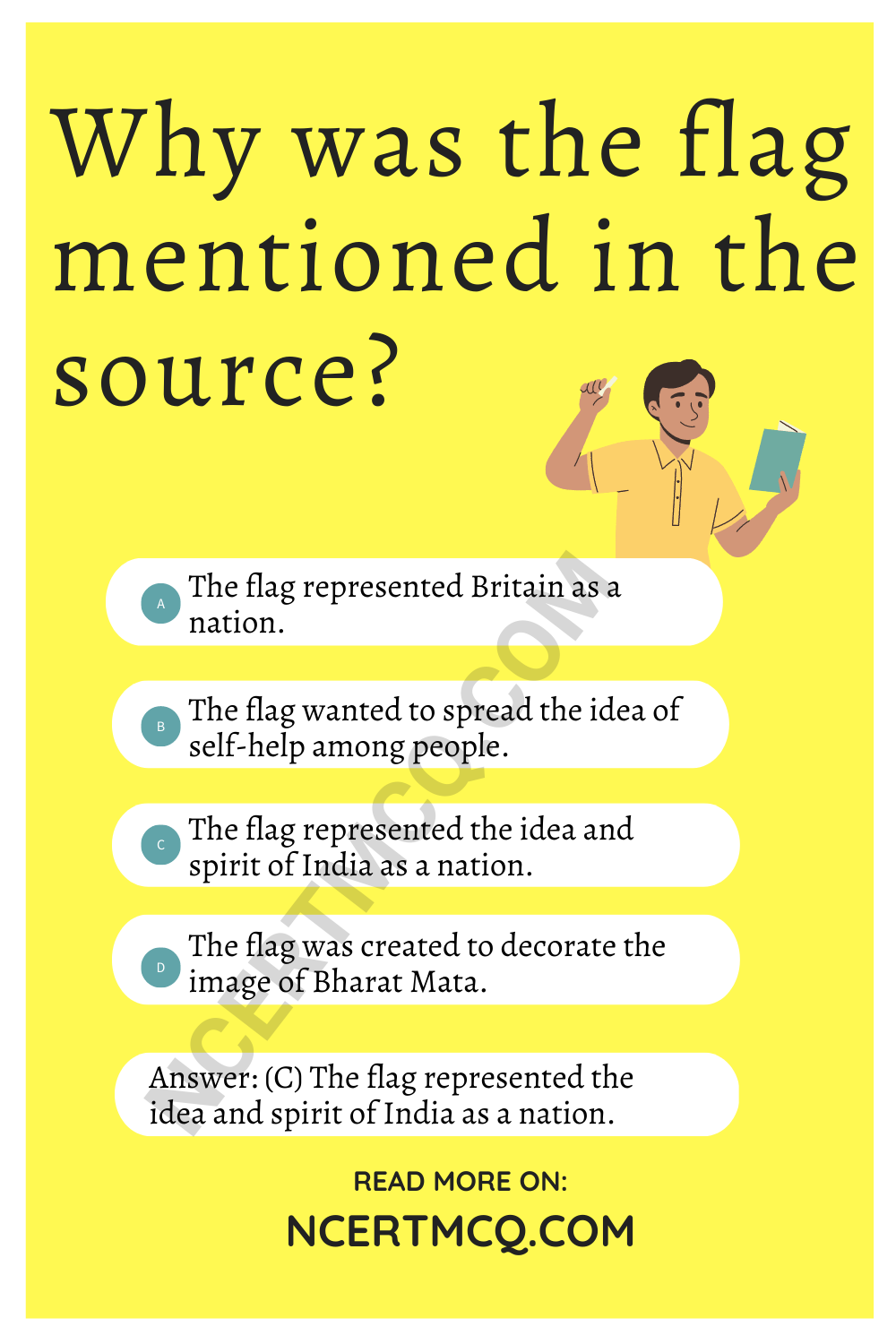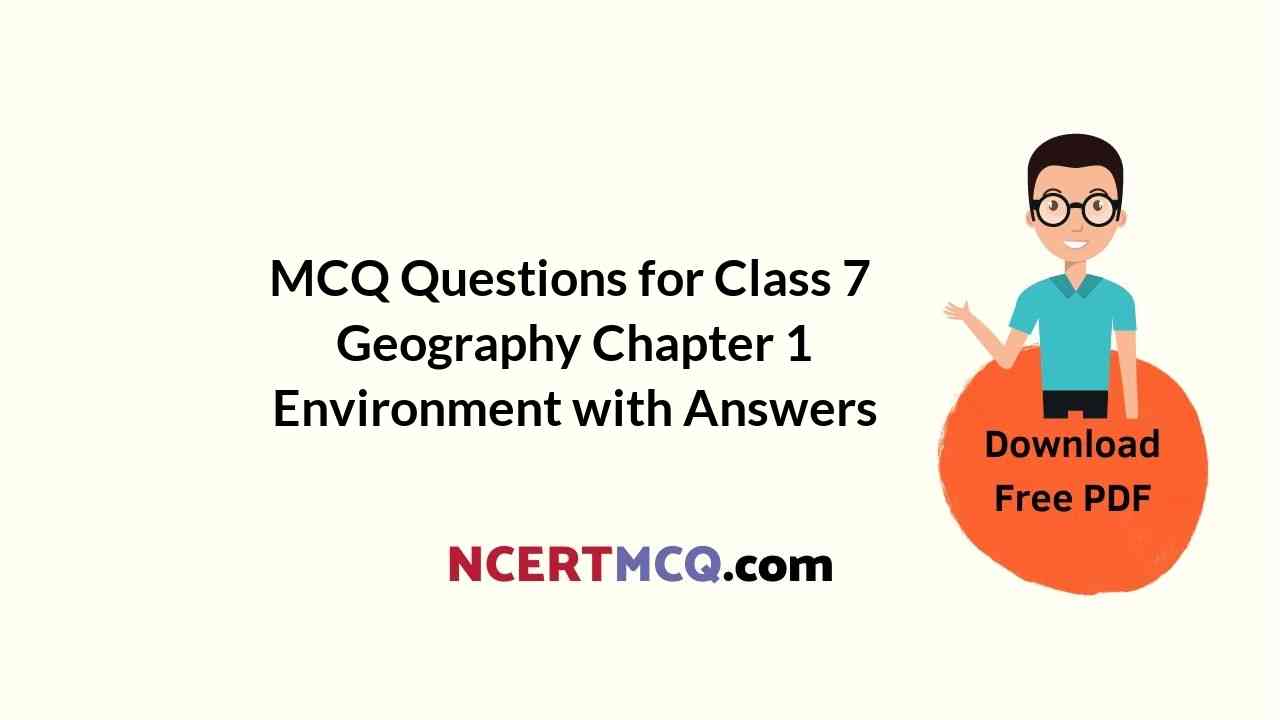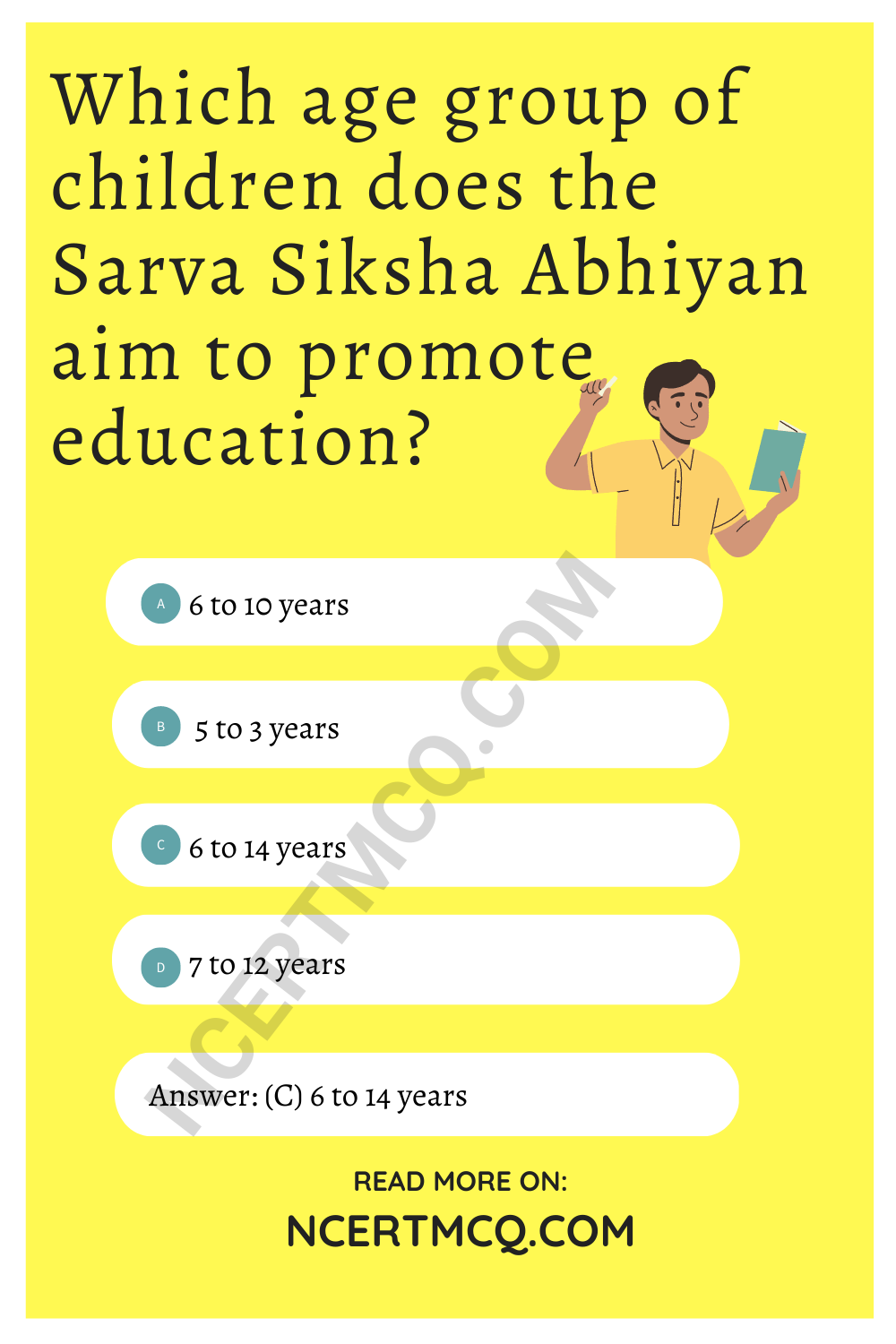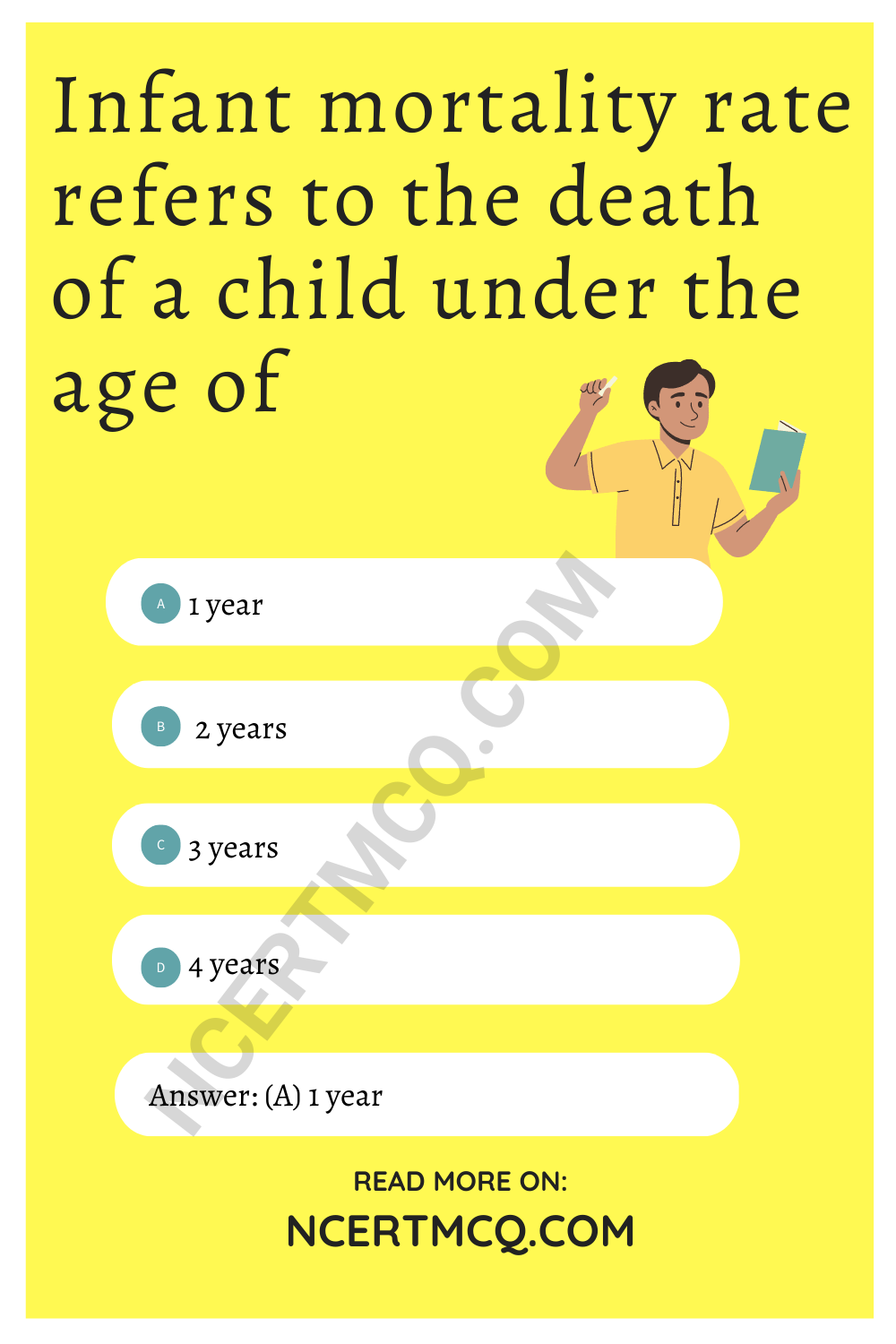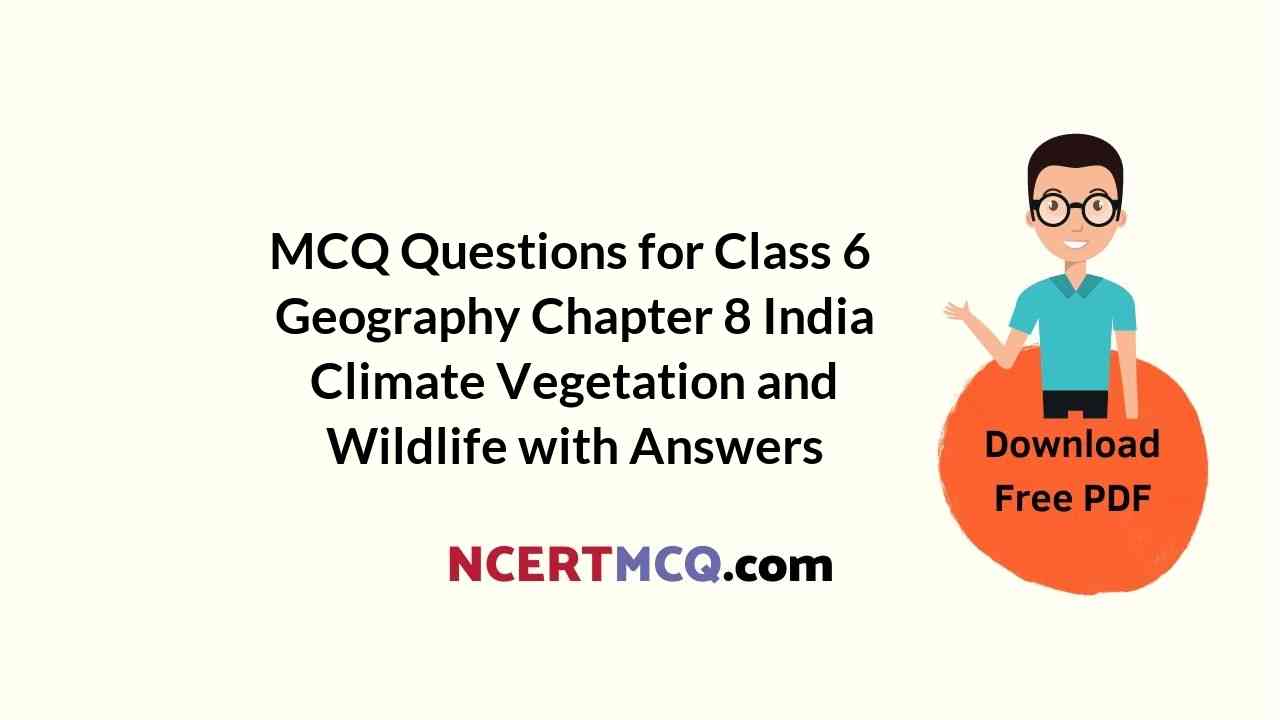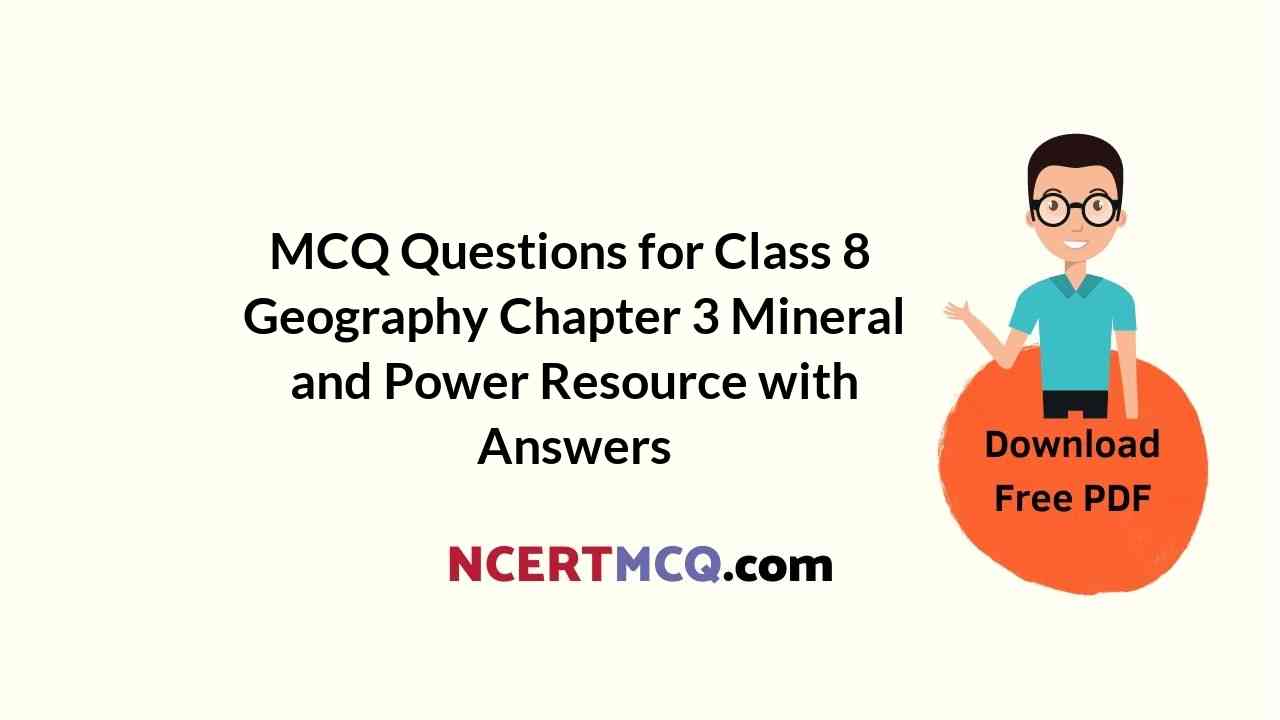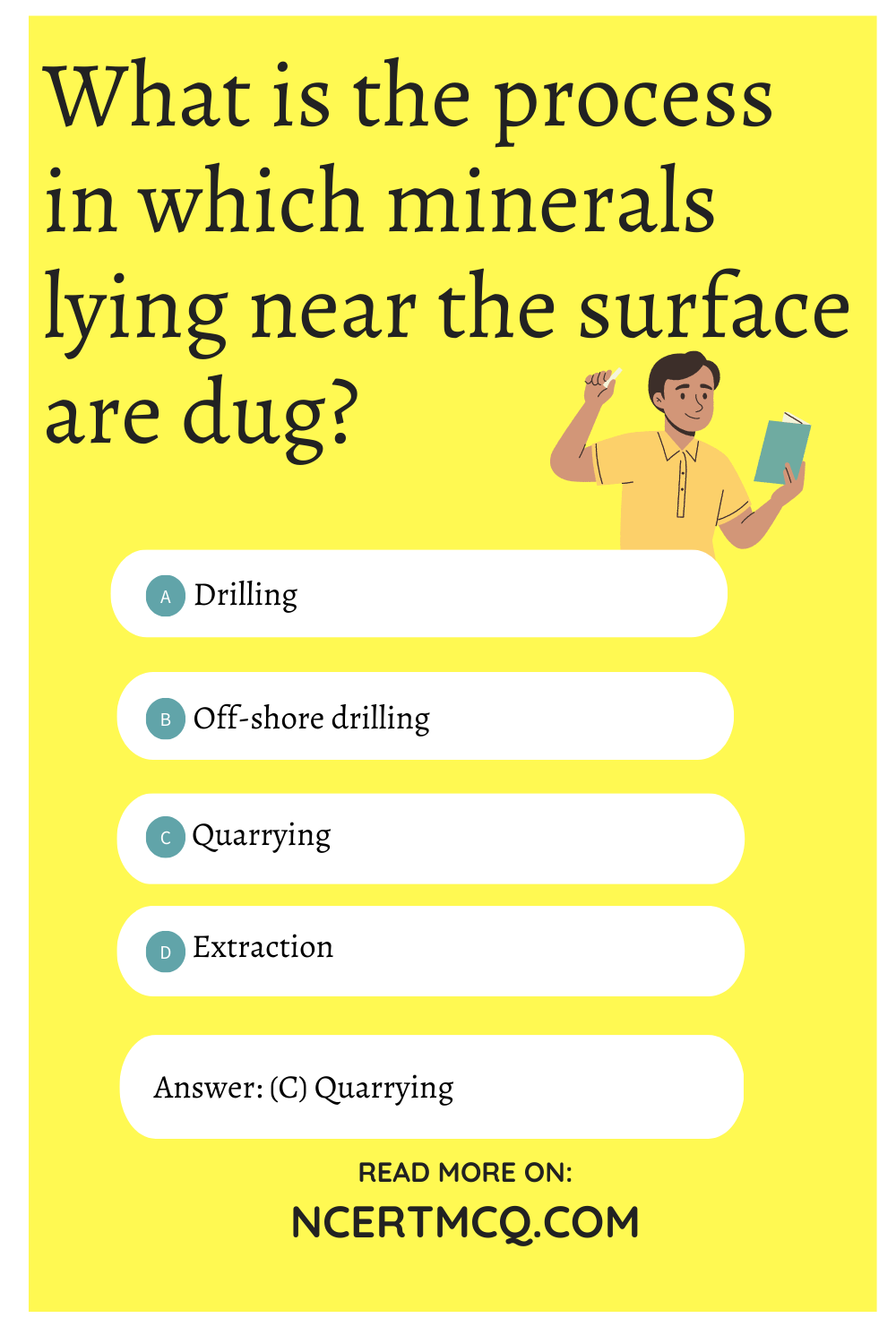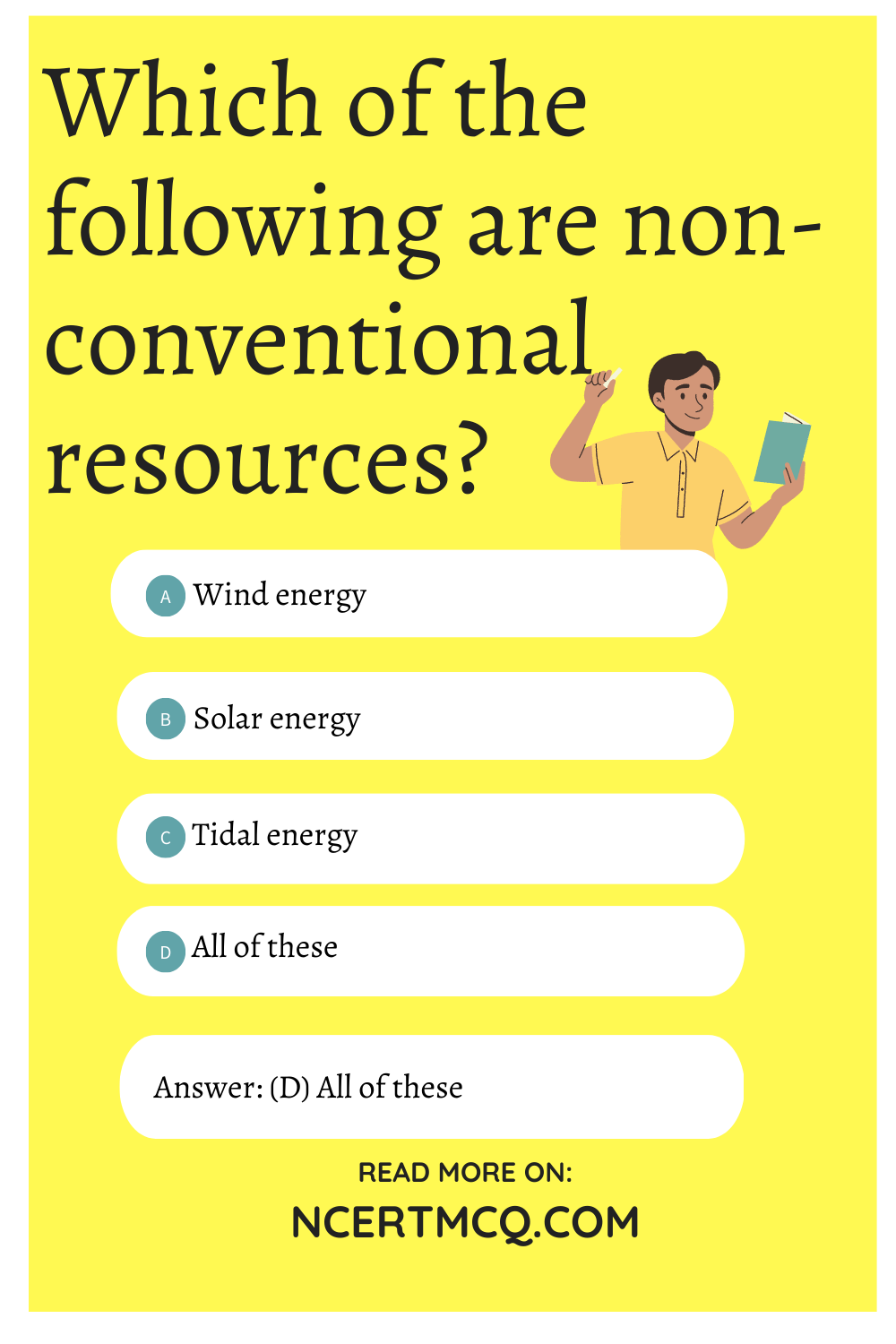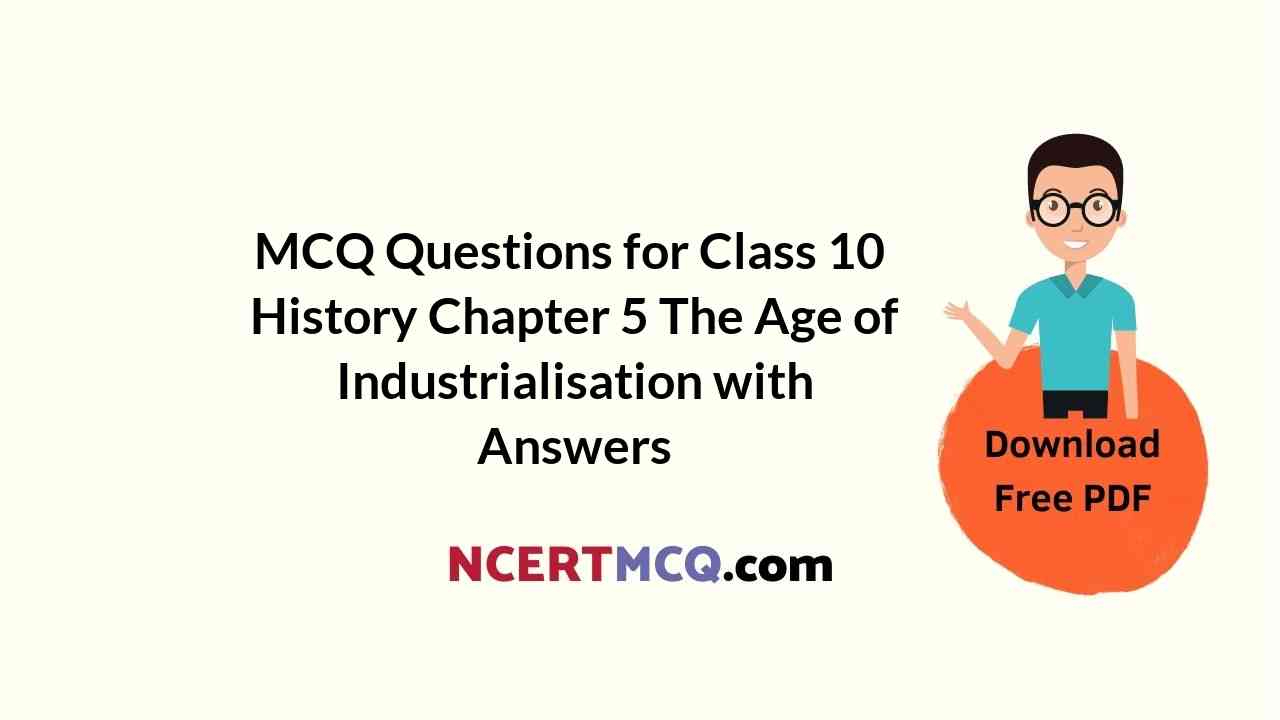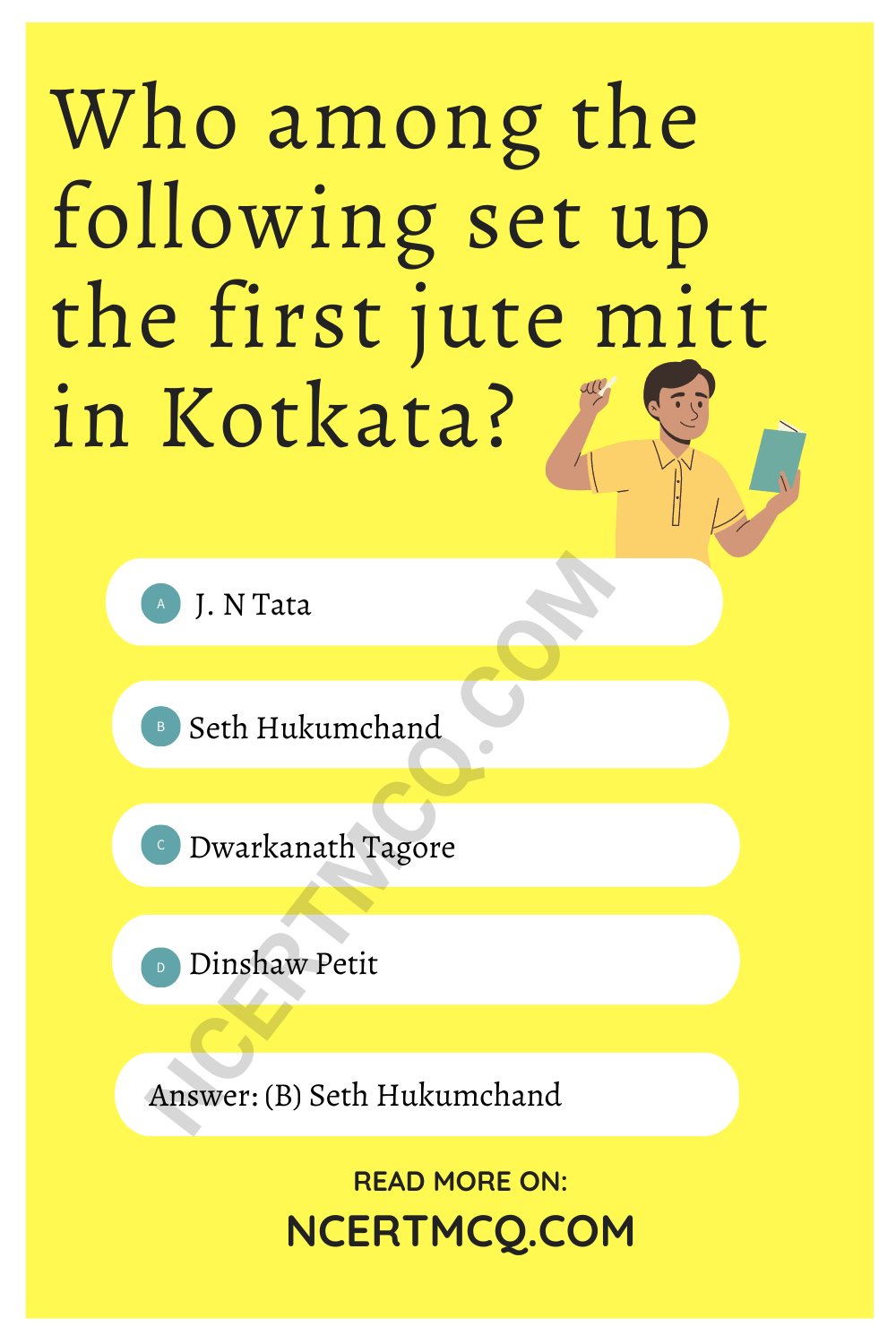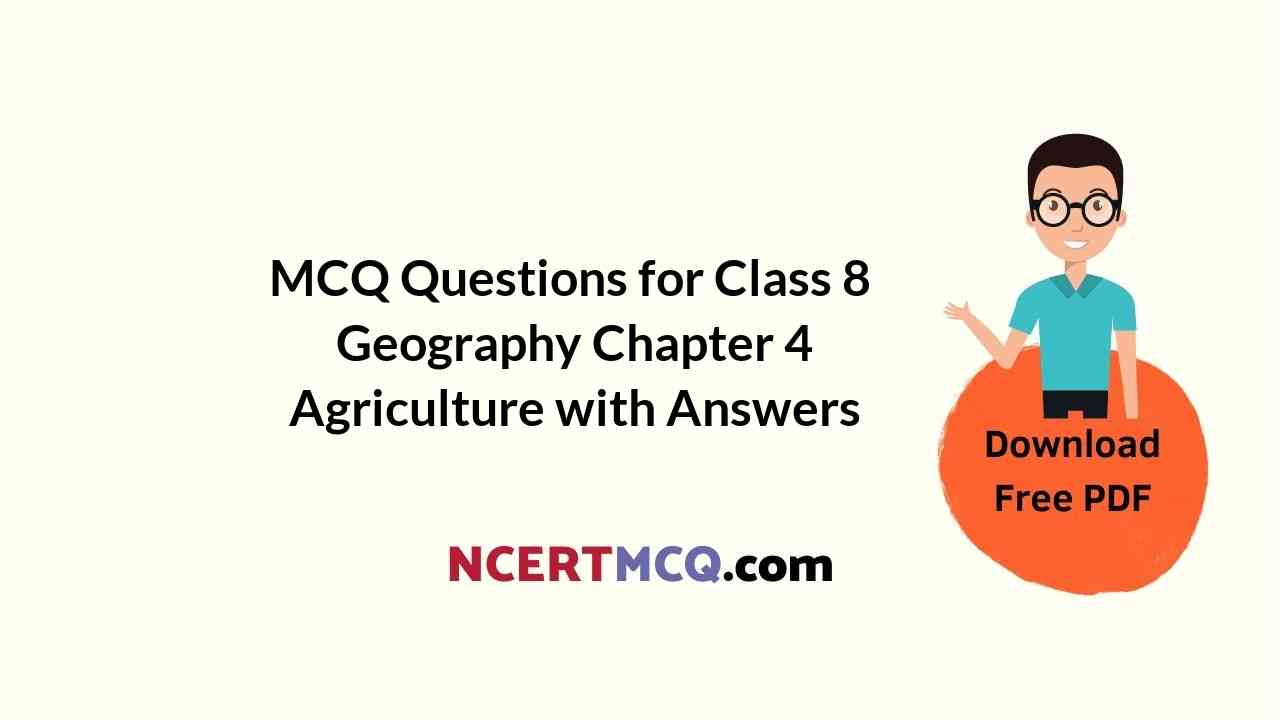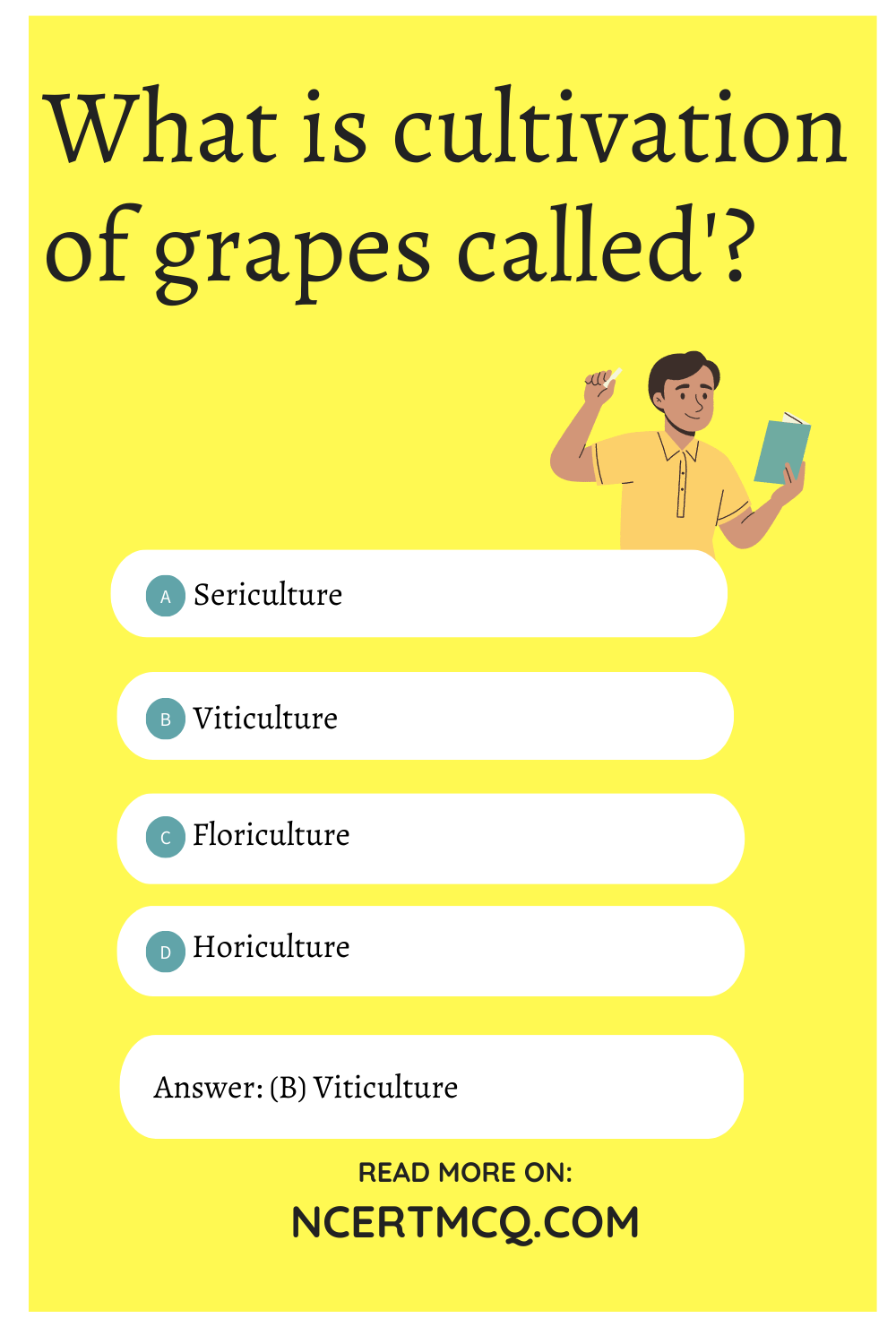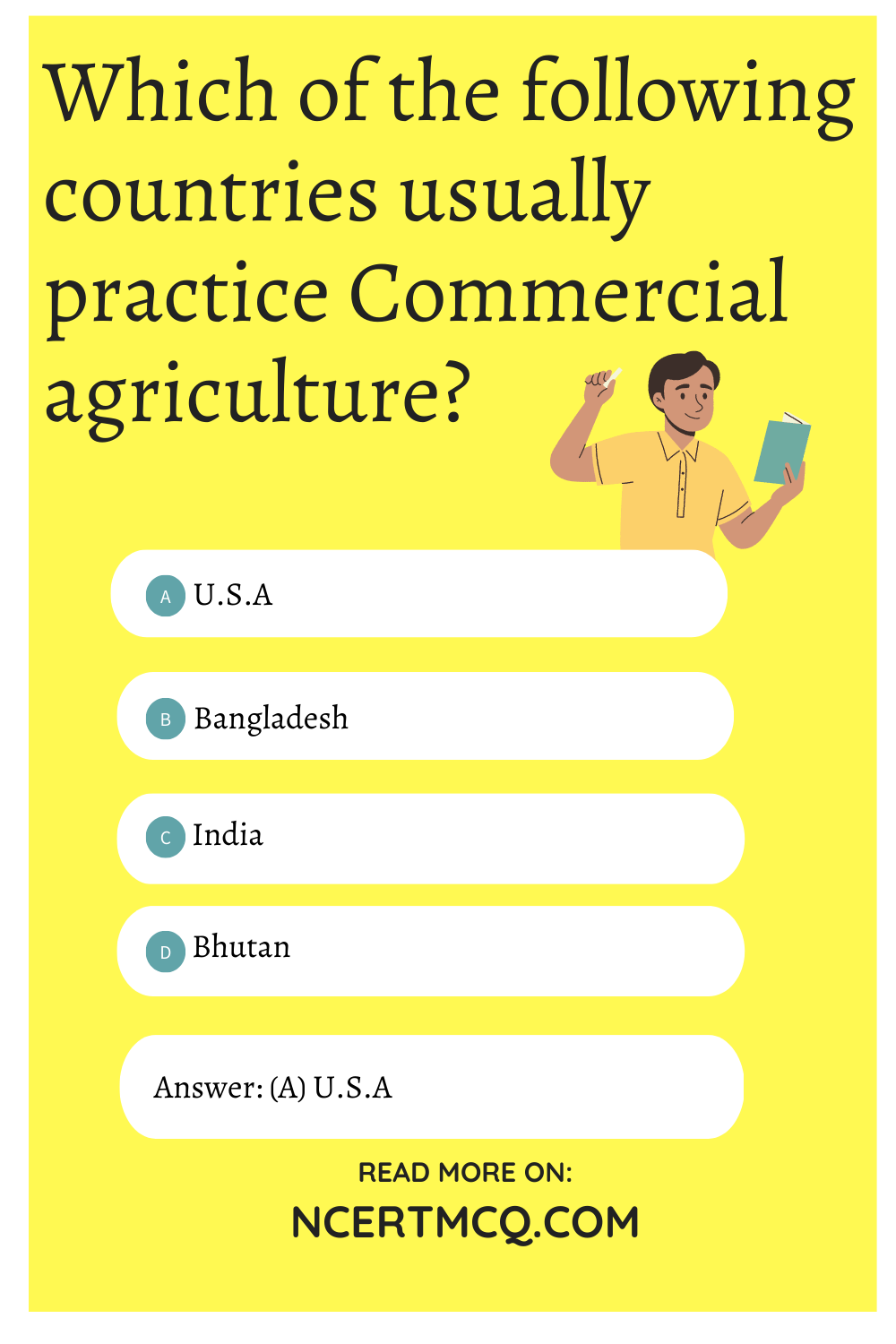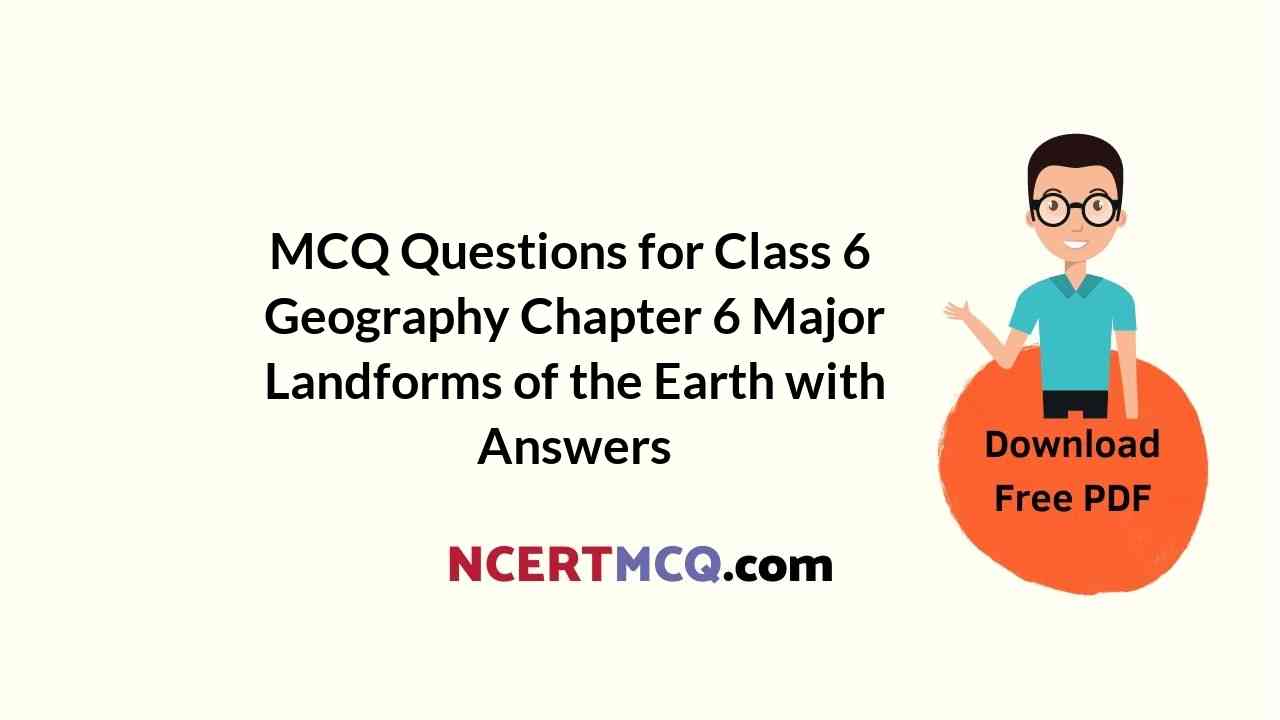Check the below Online Education NCERT MCQ Questions for MCQ Questions for Class 10 History Chapter 1 The Rise of Nationalism in Europe with Answers Pdf free download. https://ncertmcq.com/mcq-questions-for-class-10-social-science-with-answers/
Class 10 Social Science History Chapter 1 MCQ With Answers
History Class 10 Chapter 1 MCQs On The Rise of Nationalism in Europe
Nationalism In Europe Class 10 MCQ Question 1.
Which of the following countries was not a united nation-state when Frederic Sorrieu painted “Democratic and Social Republics”?
(a) Switzerland
(b) Sicily
(c) Ireland
(d) Germany
Answer:
(d) Germany
Explanation: In Sorrieu’s painting, nations were represented through a group of citizens bearing their respective nation’s symbols. Germany was shown reaching towards the Statue of Liberty as a nation but the country was comprised of a group of divided German¬speaking principalities in 1848.
She attained the status of a united nation¬state in 1871.
Related Theory
Switzerland was already a liberal nation-state and led the procession of states along with the USA. Ireland and Sicily were behind Germany in the procession. They were united as a nation but had not attained liberty by 1848.
Rise Of Nationalism In Europe Class 10 MCQ Question 2.
Which of the following statements is true about nation-states?
(a) Citizens share a common sense of shared identity or history.
(b) Nation-state is a state ruled by one absolute ruler.
(c) Commonness is forged through linguistic factors only.
(d) Nation-States are directly ruled by people and based on the heterogenization of society.
Answer:
Class 10 History Chapter 1 MCQ Question 3.
Choose the correctly matched pair from the following:
(a) Giuseppe Garibaldi – Britain
(b) Otto Von Bismarck – Italy
(c) Friedrich Wilhelm IV – Germany
(d) Giuseppe Mazzini – Italy
Answer:
(d) Giuseppe Mazzini – Italy
Explanation: Mazzini was an Italian revolutionary who struggled to unify Italy and set up secret societies in order to achieve that His efforts were however in vain.
Related Theory
Correctly matched pairs: Giuseppe Garibaldi was one of the most celebrated of Italian freedom fighters. He led his volunteers to win several wars in order to unify Italy.
Otto Von Bismarck was the Prussian chief minister who took up the task of unifying Italy along with his bureaucracy and army.
Friedrich Wilhelm IV was the King of Prussia who opposed the elected assembly after Frankfurt Parliament.
![]()
The Rise Of Nationalism In Europe MCQ Question 4.
Fill in the blank by choosing the right answer from the options given below:
Bohemia: German, Galicia:
(a) Magyar
(b) French
(c) Polish
(d) Russian
Answer:
(c) Polish
Explanation: Eastern and Central Europe was divided into multipLe autocratic monarchies where ethnically and culturally diverse people resided. They spoke different languages and did not share a sense of collective identity.
The aristocratic class of Bohemia spoke German predominantly. The aristocratic class of Galicia was majorly Polish-speaking.
Related Theory
Magyar was spoken in Hungary.
The Rise Of Nationalism In Europe Class 10 MCQ Question 5.
Which of the following revolutions is called as the first expression of nationalism?
(a) French Revolution
(b) Russian Revolution
(c) Glorious Revolution
(d) The Revolution of Liberals
Answer:
Class 10 History Chapter 1 MCQ With Answers Question 6.
A custom union that was formed in 1834 at the initiative of Prussia and joined by most of the German states was called:
(a) Zollverein
(b) Plebiscite
(c) Utopian
(d) All of these
Answer:
(a) Zollverein
Related Theory
Plebiscite means a direct vote which gives power to the people of a region to accept or reject a proposal. Utopian means an imaginary ideal society that principally does not exist.
MCQ Questions For Class 10 History Chapter 1 Question 7.
Choose the correctly matched pair from the following:
(a) Otto Von Bismarck – Germany
(b) Napoleon – Spain
(c) Giuseppe Garibaldi – France
(d) Bourbon Kings – Italy
Answer:
(a) Otto Von Bismarck – Germany
Explanation: Otto Von Bismarck, was the Chief Minister of Prussia Germany. He was the architect of the process of unification of Germany, which was carried out with the help of the Prussian army and bureaucracy.
Related Theory
- Corrected pairs:
- Napoleon – France
- Guissepe Garibaldi – Italy
- Bourbon Kings – Spain
History Chapter 1 Class 10 MCQ Question 8.
Which one of the following claimed that true German culture was discovered among the common people-das volk?
(a) Karol Karpinski
(b) Louis Philippe
(c) CarlWelcker
(d) Johann Gottfried Herder
Answer:
(d) Johann Gottfried Herder
Explanation: Johann Gottfried Herder was a German Philosopher.
Related Theory
Louis Philippe was the constitutional monarch of France and his reign was known as July monarchy as he came in power after the July Revolution of 1830. Karol Karpinski was a polish music composer.
Carl Welcker was a liberal politician and an elected member of the Frankfurt Parliament which convened in the Church of St. Paul on 18 May 1848.
![]()
Ch 1 History Class 10 MCQ Question 9.
Which among the following best signifies the idea of liberal nationalism of nineteenth-century Europe?
(a) Emphasis on social justice
(b) State planned socio-economic system
(c) Freedom for individual and equality before law
(d) Supremacy of state oriented nationalism.
Answer:
History Class 10 Chapter 1 MCQ Question 10.
In 1789, France was a full-fledged territorial state under the rule of which of the following:
(a) A Federal Republic
(b) An Absolute Monarch
(c) A Democratic Ruler
(d) None of these
Answer:
(b) An Absolute Monarch
Explanation: Louis XVI, a Bourbon King was an absolute monarch in France in 1789.
MCQ Questions For Class 10 Icse History Chapter 1 Question 11.
“When France sneezes, the rest of Europe catches cold”. Who among the following said this popular line ?
(a) Giseppe Mazzini
(b) Metternich
(c) Otto Von Bismarck
(d) Guiseppe Garibaldi
Answer:
The Rise Of Nationalism In Europe Class 10 MCQ With Answers Pdf Question 12.
Who among the following was proclaimed as the first German Emperor in 1871?
(a) William I
(b) William II
(c) Friendrich William I
(d) Friedrich William II
Answer:
(a) William I
Explanation: In January 1871, the Prussian king, William I, was proclaimed the first German Emperor in a ceremony held at Versailles.
MCQ For Class 10 History Chapter 1 With Answers Question 13.
Study the picture and answer the question that follows:
Which of the following aspect best signifies this image of Germania?
(a) Heroism and Justice
(b) Folk and Cultural Tradition
(c) Austerity and Asceticism
(d) Revenge and Vengeance
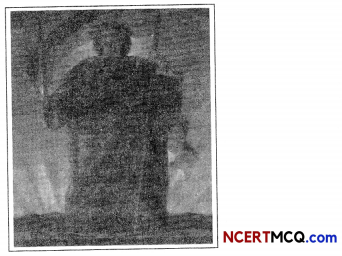
Answer:
(a) Heroism and Justice
MCQ Of Chapter 1 History Class 10 With Answers Question 14.
Which of the following reform/s was/were introduced by Napoleon?
(a) Standardized system of weights and measures
(b) A common national currency
(c) Abolition of the feudal system
(d) All of the above
Answer:
The Rise Of Nationalism In Europe Class 10 MCQ With Answers Pdf Download Question 15.
Which one of the following attributes stands for ‘Willingness to make peace’?
(a) Breastplate with eagle
(b) Olive branch around the sword
(c) Broken chain
(d) All of the above
Answer:
(b) Olive branch around the sword
Explanation: An olive branch symbolises peace and the sword symbolises readiness to light but together an olive branch around the sword symbolises willingness to make peace.
Related Theory
Breastplate with eagle stands for ‘symbol of German empire-strength’ while broken chain refers to ‘Being freed’
![]()
Question 16.
which of the following was NOT visualized by Frederic Sorrieu in his first print of series of four prints made up of ‘Democratic and the Social Republic’?
(a) The people of America and Europe-men and women of all ages
(b) Social classes marching in a long train
(c) Offering homage to the Statue of Unity
(d) All of these
Answer:
Question 17.
He was described as ‘the most dangerous enemy of our social order’ by Metternich. Who was he?
(a) Lord Byron
(b) Giuseppe Mazzini
(c) Garibaldi
(d) Napoleon
Answer:
(b) Giuseppe Mazzini
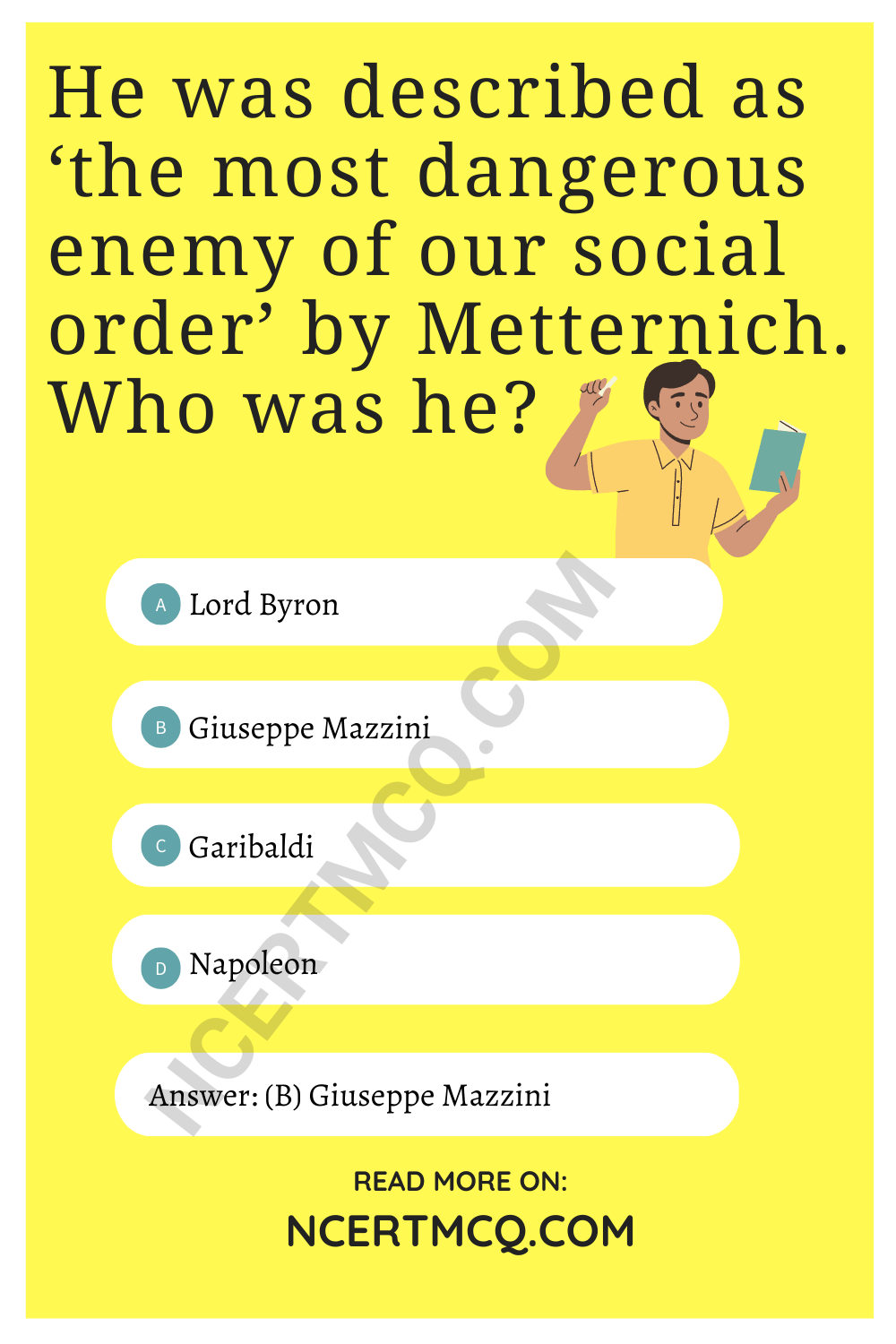
Explanation: Mozzini’s relentless opposition to monarchy and his vision of democratic republics frightened the conservatives in Europe and so was described as the ‘most dangerous enemy of our social order’ by Metternich-chancellor of Austria who himself was a conservative.
Question 18.
Which one of the following was NOT among the symbols of the new Britain when a new ‘British nation’ was forged through the propagation of a dominant English culture?
(a) Union Jack
(b) God Save Our Noble King
(c) English Language
(d) Irish Language
Answer:
(d) Irish Language
Explanation: Union Jack-the British flag. God Save Our Noble King-the national anthem and the English language were actively promoted after the United Kingdom was formed. Whereas scotland and Ireland became subordinate partners of the united kingdom.
Question 19.
The French Revolution artists used the female allegory to portray which of the following ideas?
(a) Liberty
(b) Justice
(c) Republic
(d) ALL of these
Answer:
(d) All of these
Question 20.
In visual representations, who wears a crown of oak Leaves?
(a) Marianne
(b) Germania
(c) Both (a) and (b)
(d) None of these
Answer:
(b) Germania
Explanation: Germania wearing a crown of oak [earns symbolizing heroism became the allegory of the German nation white Marianne was of France.
Question 21.
A government or system of rute that has no restraints on the powers exercised is called:
(a) Absolutist
(b) Utopian
(c) Democratic
(d) Conservatist
Answer:
Question 22.
Sorrieus vision of society which is so idealistic that it is unLikeLy to exist is called
(a) Utopian
(b) Democratic
(c) AbsoLutist
(d) Conservatist
Answer:
(a) Utopian
Explanation: Utopian Vision of French Artists was so ¡deal- so perfect and unadulterated that it was impossible to find such a vision to materialise in reality.
Related Theory
Absolutism is a type of governance or system of rute that has no restraints on the power exercised.
Democracy is the supremacy of will of common people, government ¡s run by representatives chosen by common people.
Conservatism is a patitical philosophy that stressed the importance of tradition, established institutions and customs and preferred gradual development to quick change.
![]()
Question 23.
Arrange the following events of world history in increasing order of their date of occurrence
(i) Unification of Italy
(ii) Vienna Peace Settlement
(iii) Napoleonic wars begin
(iv) Unification of Germany
Options:
(a) (i)-(ii)-(iii)-(iv)
(b) (iv)-(iii)-(ii)-(i)
(c) (ii)-(i)-(iii)-(iv)
(d) (iii)-(ii)-(i)-(iv)
Answer:
Question 24.
Choose the INCORRECT option from column A and column B.
| Column A | Column B |
| (a) Frederic Sorrieu | (i) A British Artist |
| (b) Bismarck | (ii) Unification of Germany |
| (c) Lord Byron | (iii) An English poet |
| (d) Karol Karpinski | (iv) A Polish music composer |
Answer:
(a) Frederic Sorrieu-(i) A British Artist
Explanation: Frederic Sorrieu was a French Artist.
Related Theory:
In 1848, Frederic Sameu prepared a series of four prints visualizing his dream of a world made up of Democratic and Social Republics
Question 25.
Choose the CORRECT option from column A and column B.
| Column A | Column B |
| (a) Absolutist | (i) A vision of society |
| (b) Utopian | (ii) A form of government |
| (c) Plebiscite | (iii) A system of direct vote |
| (d) Suffrage | (iv) A system of holding election |
Answer:
(c) Plebiscite – (iii) A system of direct vote
Explanation: (a, b, and d are incorrect)
A plebiscite is a system of direct voting by which all the people of a region are asked to accept or reject a proposal.
Related Theory
Absolutist refers to a form of monarchial government or system of rule that has no restraints on the power exercised
Utopian means a vision of society that is so ideal that it is unlikely to actually exist.
Suffrage refers to the right to vote.
Question 26.
Which one of the following statements if asle regarding the Act of Union 1707 ?
(a) It was an agreement between England and Scotland.
(b) It was an agreement between England and Ireland.
(c) It resulted in the formation of the ‘United Kingdom of Gret Britain’.
(d) It gave England control over Scotland.
Answer:
(b) It was an agreement between England and Ireland.
Explanation: England was unified through an Act called the Act of Union 1707 passed by the English Parliament. This Act forged a union between England and Scotland. England gained supremacy and suppressed Scottish identity through its political, economic and diplomatic power. Ireland was joined later in 1801, after revolts from Irish Catholics.
![]()
Question 27.
Which among the following was the main reason for the weavers to revolt against contractors in Silesia, in 1845 ?
(a) Contractors reduced their payments drastically.
(b) They stopped the supply of raw materials to them.
(c) They refused to place orders for finished textiles.
(d) Condition of weavers was very pitiable.
Answer:
Question 28.
Which one of the following states was ruled by an Italian princely house before unification of Italy ?
(a) Kingdom of Two Sicilies
(b) Lombardy
(c) Venetia
(d) Sardinia-Piedmont
Answer:
(d) Sardinia-Piedmont
Explanation: Italy was divided into seven states/principalities. Sardinia-Piedmont was the only one ruled by an Italian princely house.
Related Theory
Venetia and Lombardy located in the north were under Austrian Habsburgs, the centre was ruled by the Pope and the southern regions (the two kingdoms of Sicily were under the domination of the Bourbon kings of Spain.
Question 29.
Which one of the following is not true about the female allegory of France ?
(a) She was named Marianne.
(b) She took part in the French Revolution.
(c) She was a symbol of national unity.
(d) Her characteristic were drawn from those of Liberty and the Republic.
Answer:
(b) She took part in the French Revolution.
Explanation: French Allegory Marianne was a symbolical figure which represented the country of France. She was not a human but a symbol and hence she did not take part in the French Revolution.
Identify the following on basis of the hints given in each question.
Question 30.
Identify the personalities:
(1) They were two brothers who studied law, they soon developed an interest in collecting old folktales.
(2) They spent six years traveling from village to village, talking to people and writing down fairy tales.
(3) They also published a 33-volume dictionary of the German language.
Answer:
Jacob and Wilhelm Grimm
Explanation: They were born in Germany and published Grimm’s Fairy Tales for Children.
Question 31.
Identify the personality :
(1) He was an Austrian Chancellor.
(2) He hosted the Congress of Vienna.
(3) He said “When France sneezes, the rest of Europe catches cold”.
Answer:
Duke Metternich
Explanation: He was the Austrian Chancellor and believed that conservative order was the best type of government to rule and unify the state.
Question 32.
Identify the class:
(1) They owned estates in the countryside and also town-houses.
(2) They spoke French for purposes of diplomacy and in high society.
(3) Their families were often connected by ties of marriage.
Answer:
Correct and Rewrite/True-False
State whether the statements are True or False. If false, correct the statement:
Question 33.
Germania wears red cap, the tricolour, the cockade.
Answer:
False
Germania became the allegory of the German nation and wears a crown of oak leaves, as the German oak stands for heroism.
Explanation: Artists in the eighteenth and nineteenth centuries personified nations and basic values of liberty, truth, justice through female figures. These were called female allegories. Germania was the allegory of Germany. She wears crown of German Oak leaves which stands for Heroism.
Question 34.
Napoleon abolished the feudal system in various parts of Europe.
Answer:
![]()
Question 35.
Louise Otto-Peters was a political activist who founded a women’s journal and subsequently a feminist social union.
Answer:
Louise Otto-Peters was a political activist who founded a woman’s journal and subsequently a feminist political association.
Question 36.
The Bourbon kings who had been restored to power during the conservative reaction after 1815 were now overthrown by radical conservatives.
Answer:
The Bourbon kings who had been restored to power during the conservative reaction after 1815 were now overthrown by liberal revolutionaries.
Question 37.
The 1830s were years of great political uprising in Europe.
Answer:
The 1830s were years of great economic hardship in Europe.
Fill in the blanks with suitable information:
Question 38.
The most serious source of nationalist tension in South-eastern Europe after 1871 was in the area called…………………
Answer:
Question 39.
The German philosopher ……….. claimed that true German culture was to be discovered among the common people-das volk.
Answer:
Johann Gottfried Herder
![]()
Question 40.
Name the term used for the countries to the east of the Mediterranean, usually referring to Asia.
Answer:
Orient
Explanation: Western countries see this region as pre-modern, traditional and mysterious. The name Orient also means the same.
Question 41.
Giuseppe Mazzini was a revolutionary from
Answer:
Italy
Question 42.
……………….. mobilized nationalist feelings among the educated elite across Europe.
Answer:
Question 43.
Read the source given:
The delegates drew up the Treaty of Vienna with the object of undoing most of the changes that had come about in Europe during the Napoleonic wars. The Bourbon dynasty, which had been deposed during the French Revolution, was restored to power, and France lost the territories it had annexed under Napoleon.
Answer the question.
Vienna Peace Settlement was signed in ……………………
![]()
Match the Columns Choose the correct pairs:
Question 44.
Match the following symbols from column A with their meanings from column B.
| Column A (Symbols) | Column B (Meanings) |
| (a) Broken chains | (i) Heroism |
| (b) Sword | (ii) Being freed |
| (c) Crown of oak leaves | (iii) Symbol of the German empire strength |
| (d) Breastplate with eagle | (iv) Readiness to fight |
Answer:
| Column A (Symbols) | Column B (Meanings) |
| (a) Broken chains | (ii) Being freed |
| (b) Sword | (iv) Readiness to fight |
| (c) Crown of oak leaves | (i) Heroism |
| (d) Breastplate with eagle | (iii) Symbol of the German empire strength |
Question 45.
Match the following famous personalities from column A with their actions from column B.
| Column A (Personalities) | Column B (Their Actions) |
| (a) Friedrich Wilhelm IV | (i) Organised funds and went to fight in the war |
| (b) Louise Otto-Peters | (ii) Proclaimed man-the stronger and woman-the weaker |
| (c) Carl Weicker | (iii) Founded a women’s journal |
| (d) Lord Byron | (iv) Joined other monarchs to oppose the elected assembly |
Answer:
Question 46.
Match the following years from column A with important events from column B.
| Column A (Years) | Column B (important Events) |
| (a) 1707 | (i) Ireland was incorporated into the UK |
| (b) 1801 | (ii) The Act of Union |
| (c) 1821 | (iii) William-I The Prussian King |
| (d) 1871 | (iv) Greek struggle for independence begins |
Answer:
Assertion Reasoning questions Class 10 History Chapter 1
In each of the following questions, a statemant of Assertion (A) is given followed by a corresponding statement of Reason (R). Select the correct answer to codes (a), (b) (c) or (d) as given below:
(a) Both (A) and (R) are true and (R) is the correct explanation of (A).
(b) Both (A) and (R) are true but (R) is not the correct explanation of (A).
(c) (A) is correct but (R) is wrong.
(d) (A) is wrong but (R) is correct.
Question 47.
Assertion (A): Serfdom and bonded Labour were aboLished in Habsburg dominion and Russia.
Reason (R): Monarchs had realised that revolution could be resisted only by granting concessions to liberal- nationalist rebels.
Answer:
(a) Both (A) and (R) are true and (R) is the correct explanation of (A).
Explanation: To curb repression and threats of revolution, autocratic monarchies of Europe (central and eastern) began to introduce changes and concessions to lure the rebels. Thus, both serfdom and bonded labour were abolished and they were treated better.
![]()
Question 48.
Assertion (A): The issue of extending political rights to women was a controversial one within the Liberal movement.
Reason (R): Women were considered inferior and dependent upon men by the society, despite their enthusiastic performance in Liberal Movement.
Answer:
(a) Both (A) and (R) are true and (R) is the correct explanation of (A).
Question 49.
Assertion (A): In the years after 1848, the autocratic monarchies of Central and Eastern Europe began to introduce the changes that had already taken place in Western Europe before 1815.
Reason(R): Napoleon won over Europe once again.
Answer:
Question 50.
Assertion (A): Nationalism, aligned with imperialism, led Europe to disaster in 1914.
Reason(R): Many countries in the world which had been colonized by the European powers in the nineteenth century began to oppose imperial domination.
Answer:
(b) Both (A) and (R) are true but (R) is not the correct explanation of (A).
Explanation: The aspirations of Russia, Germany, England, Austro-Hungary about extending their own control over more area led to the first World War in 1914 which was the disaster being mentioned in the assertion. Though the imperial domination of Britain was opposed, it gained momentum after the First World War ended.
Question 51.
Assertion (A): The growth of revolutionary nationalism in Europe sparked off a struggle for independence amongst the Greeks which began in 1831.
Reason(R): Greece was suffering under subjugation of the Ottoman Empire.
Answer:
(Competency Based Questions (CBQs))
Question 1.
Which of the following statements stands true about the Statue of Liberty?
(I) The Statue of Liberty holds the torch of Enlightenment and bears the Charter of Rights of Man in her hand.
(II) Frederic Sorrieu painted the statue of Liberty and Statue of Republic in his “Democratic and Social Republics.”
(III) The Statue of Liberty is situated in France.
(IV) The Statue of Liberty is allegorical representation of value of Liberty.
(a) (I) & (III) only
(b) (I) & (IV) only
(c) (II), (III) & (IV) only
(d) (I), (II), (III) & (IV)
Answer:
(b) (I) & (IV) only
Explanation: Statue of Liberty is situated in Liberty Island, USA and was painted in Sorrieu’s painting titled “Democratic and Social Republics” of 1848 as an allegorical representation of Liberty. She holds the torch of Enlightenment and the Charter of the Rights of Man in her hands.
Nations were shown marching towards it with aspirations of attaining liberty and a status of nation-state.
![]()
Question 2.
Read the source and answer the question that follows:
The members of this class were united by a common way of life that cut across regional divisions. They owned estates in the countryside and also town-houses. They spoke French for purposes of diplomacy and in high society. Their families were often connected by ties of marriage.
Identify the class mentioned in the source given above:
(a) Aristocratic Class
(b) Peasant Class
(c) Nobility
(d) Capitalist class
Answer:
(a) Aristocratic Class
Explanation: Landed aristocracy was a dominant class in Europe and were rich since they owned their fields and others cultivated these fields for them. They were numerically small.
Related Theory:
Nobility or the ruler class did not own farmlands and the peasant class cultivated the fields of aristocrats. They were tenants and did not own the lands upon which they worked hard.
Question 3.
Match the following items given in Column A with those in Column B.
Choose the correct answer from the options given below:
|
Column A |
Column B |
| (A) Tready of Constantinople | (I) 1815 |
| (B) Vienna Peace Settlement | (II) 1832 |
| (C) Ceremony at Versailles | (III) 1707 |
| (D) Act of Union | (IV) 1871 |
(a) (A)-(I), (B)-(III), (C)-(IV), (D)-(II)
(b) (A)-(III), (B)-(IV), (C)-(II), (D)-(I)
(c) (A)-(II), (B)-(I), (C)-(IV), (D) -(III)
(d) (A)-(IV), (B)-(III), (C)-(II), (D)-(I)
Answer:
Question 4.
Study the picture and answer the question that follows.
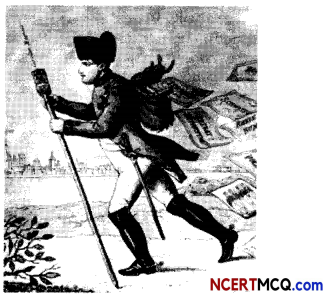
Explain as to what does this image of‘The courier of Rhineland’ say about Napoleon?
Answer:
This picture shows the loss of territories under Napoleon after his defeat at Battle of Leipzig in 1813.
Explanation: Napoleon in this picture is shown as a postman on his way back to France after he lost the battle of Leipzig in 1813. Each letter dropping out of his bag shows the names of the territories he lost after this battle.
![]()
Question 5.
Which of the following statements stand true for the nation of Poland?
(I) Poland was partitioned in eighteenth century.
(II) With the end of Poland, the sentiments of nationalism among the Polish people ended as well.
(III) Karl Kurpinski was a polish artist.
(IV) Poland was ruled over by Russia and Polish language was used as a weapon of struggle against Russian Dominance.
(a) (I) only
(b) (II) & (IV) only
(c) (I), (III) & (IV) only
(d) (I), (II), (III) & (IV)
Answer:
(c) (I), (III) & (IV) only
Explanation: Polish nationalism was preserved and continuously promoted through music and language by its artists and revolutionaries. Poland was given to Russia after Vienna Peace Settlement.
Question 6.
Read the source given below and answer the questions that follow:
Other Romantics such as the German philosopher Johann Gottfried Herder (1744¬1803) claimed that true German culture was to be discovered among the common people – das volt It was through folk songs, folk poetry and folk dances that the true spirit of the nation (volksgeist) was popularised. So collecting and recording these forms of folk culture was essential to the project of nation¬building. The emphasis on vernacular language and the collection of local folklore was not just to recover an ancient national spirit, but also to carry the modern nationalist message to large audiences who were mostly illiterate.
(A) Which of the following statement best describes the Romantic Movement?
(a) It was about the emotions of patriotism towards one’s state.
(b) It was a cultural movement which sought to develop nationalist sentiments.
(c) It was a literary movement to focus on vernacular languages.
(d) Both (b) and (c)
Answer:
(B) Who among the following celebrated nationalism through opera music?
(a) Garibaldi
(b) Grimm Brothers
(c) Karol Kurpinski
(d) Mazzini
Answer:
(c) Karol Kurpinski
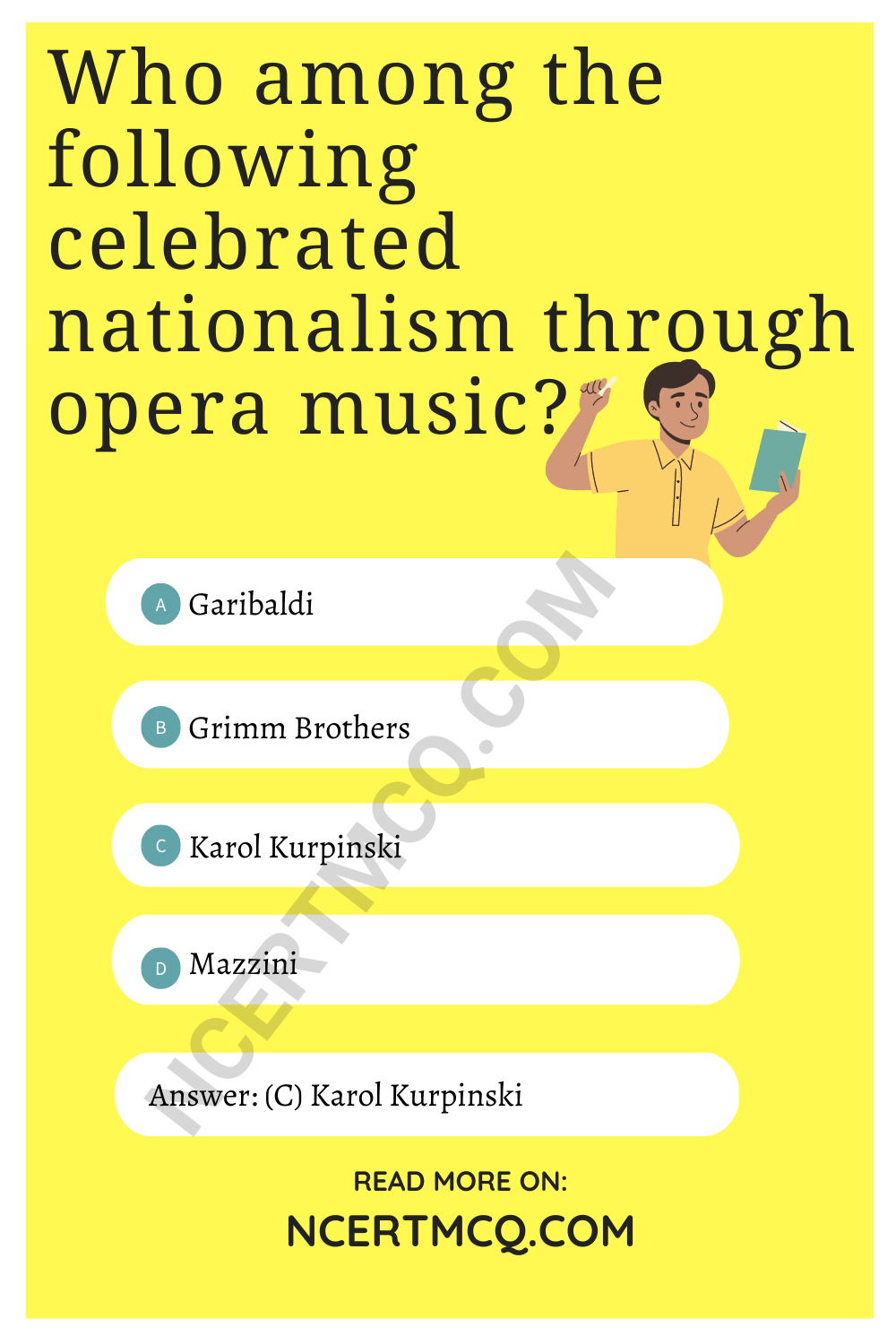
(C) Define Volksgeist.
Answer:
Volksgeist is the spirit of nation a set of intellectual, moral and cultural traits that define nations.
(D) Assertion (A): It was through folk songs, folk poetry and folk dances that the true spirit of the nation was popularised.
Reason(R): Recording these forms of foIk culture was essential to the project of nation-building.
(a) Both (A) and (R) are true and (R) is the correct explanation of (A).
(b) Both (A) and (R) are true but (R) is not the correct explanation of (A).
(c) (A) is correct but (R) is wrong.
(d) (A) is wrong but (R) is correct.
Answer:
Question 7.
Read the source given below and answer the questions that follow:
The first half of the nineteenth century saw an enormous increase in population all over Europe. In most countries there were more seekers of jobs than employment. Population from rural areas migrated to the cities to live in overcrowded slums. Small producers in towns were often faced with stiff competition from imports of cheap machine-made goods from England, where industrialisation was more advanced than on the continent.
Answer the following MCQs by choosing the most appropriate option:
(A) Which of the following revolutions were caused due to economic reasons?
(a) The Liberal Revolution
(b) Revolution of Silesian weavers
(c) Greek War of Independence
(d) Germany’s war with Austria
Answer:
(b) Revolution of Silesian weavers
Explanation: Silesian weavers in 1845, revolted against their contractors because despite ordering them and supplying them with raw materials, they had reduced their payments drastically.
(B) Who ruled France in 1830s and was forced to flee after unemployment caused workers to revolt on roads?
(a) King Emmanuel II
(b) King William I
(c) King Louis Philippe
(d) King Wilhelm (2)
Answer:
(c) King Louis Philippe
Explanation: King Louis Philippe had to flee when the revolutions started getting more frequent and violent. He ruled France up till 1848.
(C) Which right was guaranteed after the people came out on roads to revolt in France in 1830s?
(a) Right to work and vote
(b) Right to strike
(c) Right to elect their king
(d) Right to choose their profession
Answer:
(D) Why were the 1830s years of great economic hardship in Europe?
(a) Industrial Revolution had created less economic opportunities than expected.
(b) Workers were on a strike hence industries were closed.
(c) Population had risen exponentially and job opportunities were less.
(d) Aristocratic class had snatched the jobs of worker class.
Answer:
![]()
Question 8.
Read the source given below and answer the questions that follow:
The model of the nation or the nation-state, some scholars have argued, is Great Britain. In Britain the formation of the nation-state was not the result of a sudden upheaval or revolution. It was the result of a long-drawn- out process. There was no British nation prior to the eighteenth century. The primary identities of the people who inhabited the British Isles were ethnic ones – such as English, Welsh, Scot or Irish. All of these ethnic groups had their own cultural and political traditions. Answer the following MCQs by choosing the most appropriate option:
(A) Which of the following statements stands true about the process of unification of Britain:
(a) The process was a result of thirty year long war between people of different ethnicities in which only the English remained unscathed.
(b) The process was a political struggle.
(c) The unification was achieved through political and social subjugation of various ethnicities by the English.
(d) The unification was based on attack and conquer plan by the king of England.
Answer:
(c) The unification was achieved through political and social subjugation of various ethnicities by the English.
Explanation: English suppressed the Irish and Scottish ethnic identities through its political, social and territorial supremacy and forced them in a union.
(B) which of the following statements stands true for England?
(I) England was a powerful nation and its world domination was on the basis of the nation’s pride.
(II) England was economically very strong and brought Scotland under its debt.
(III) The United Kingdom of Great Britain was forged through an act in 1807 and it joined England and Scotland.
(IV) England and Scotland together suppressed Ireland to bring it under their union.
(a) (I) only
(b) (II) & (III) only
(c) 0) & (IV) only
(d) (I), (II), (III) & (IV)
Answer:
(C) England was a kingdom before the English Parliament snatched powers in 1688. Fill in the blank choosing the most appropriate answer:
(a) Republican
(b) Monarchical
(c) Democratic
(d) Directly ruled
Answer:
(D) Who was the allegory of Britain?
(a) Britannica
(b) Alexandria
(c) Britannia
(d) Melania
Answer:
(c) Britannia
Question 9.
Read the source given below and answer the questions that follow.
In 1867, Garibaldi led an army of volunteers to Rome to fight the last obstacle to the unification of Italy, the Papal States where a French garrison was stationed. The Red Shirts proved to be no match for the combined French and Papal troops. It was only in 1870 when, during the war with Prussia, France withdrew its troops from Rome that the Papal States were finally joined to Italy.
Answer the following MCQs by choosing the most appropriate option:
(A) Who was Garibaldi?
(a) Chief Minister of Italy
(b) King of Sardinia-Piedmont
(c) A Revolutionary who established Young Italy and Young Europe secret Societies.
(d) A freedom fighter who helped Cavour to unify Italy.
Answer:
(B) What was the Young Italy Movement related to?
(a) Freedom of Italy from the subjugating rule of the Ottoman rulers.
(b) A mission to educated the Youth of Italy.
(c) A mission to hold elections in Italy for the first time
(d) Unification of Italy since it was divided into various states.
Answer:
(d) Unification of Italy since it was divided into various states.
Explanation: Italy was divided into various principalities and each was ruled by a different ruler. To unify it. the Young Italy Movement was instituted by Giuseppe Mazzini and joined by Garibaldi.
(C) Match the items given in Column A to that of Column B and choose the correct option:
|
Column A |
Column B |
| (A) Sardinia Piedmont | (I) Pope |
| (B) North Italy | (II) Spanish Rulers |
| (C) South Italy | (III) Italian Rulers |
| (D) Central Italy | (IV) Austrian Rulers |
(a) (A)-(I), (B)-(III), (C)-(IV), (D)-(II)
(b) (A)-(III), (B)-(IV), (C)-(II), (D)-(I)
(c) (A)-(II), (B)-(I), (C)-(IV), (D) -(III)
(d) (A)-(IV), (B)-(III), (C)-(II), (D)-(I)
Answer:
(D) Who was proclaimed the ruler of united Italy?
(a) Cavour
(b) Kaiser William I
(c) Victor Emmanuel II
(d) King Wilhelm IV
Answer:
(c) Victor Emmanuel II
Related Theory
Camillo de Cavour was the chief minister of Sardinia- Piedmont.
Kaiser William I was proclaimed the king of united Germany in 1871.
King Frederich Wilhelm IV was the ruler of Prussia.
![]()
Question 10.
Read the source given below and answer the questions that follow:
The Bourbon kings who had been restored to power during the conservative reaction after 1815 were now overthrown by liberal revolutionaries who installed a constitutional monarchy with Louis Philippe at its head.
‘When France sneezes,’ Metternich once remarked, ‘the rest of Europe catches cold.’ The July Revolution sparked an uprising in Brussels which led to Belgium breaking away from the United Kingdom of the Netherlands.
Answer the following MCQs by choosing the most appropriate option:
(A) Why did Duke Metternich say “When France sneezes, the rest of Europe catches cold”?
(a) France was situated in a colder weather zone than the rest of Europe.
(b) French flu was highly contagious.
(c) France was the forbearer of any revolution or movement that took place in Europe.
(d) France was situated on the gateway of Europe.
Answer:
(B) Where did the Bourbon Kings belong to?
(a) Italy
(b) France
(c) Spain
(d) Austria
Answer:
(c) Spain
(C) The July Revolution took place in
(a) 1815
(b) 1845
(c) 1871
(d) 1830
Answer:
(d) 1830
(D) which of the following stands true about the conservative order?
(a) Conservatives did not accept the changed brought by Napoleon.
(b) Conservatives believed in dissent and conversation.
(c) Conservatives abolished serfdom to rule in peace.
(d) Conservatives wanted to abolish the bureaucracy.
Answer:
Question 11.
Read the source and answer the questions that follow:
The ideas of national unity in early-nineteenth- century. Europe were closely allied to the ideology of liberalism. In the economic sphere, liberalism stood for the freedom of markets and the abolition of state-imposed restrictions on the movement of goods and capital. During the nineteenth century this was a strong demand of the emerging middle classes. Napoleon had created a confederation of 39 states. Each of them had their own currency, weights and measures. A customer travelling from Hamburg to Nuremberg in 1833 to sell his goods had to pass through 11 customs barrier and pay a customs duty of about 5 percent at each one of them. Duties were often levied according to the weight or measurement of the goods. The measure of cloth, was the elle which in each region stood for a different length. An elle of textile in Frankfurt got a person 54.7 cm of cloth, in Mainz 55.1 cm, in Nuremberg 65.6 cm, in Freiburg 53.5 cm.
(A) Who was Napoleon?
Answer:
Napoleon Bonaparte was a famous French statesman and military leader who led several successful campaigns during the French Revolutionary Wars and conquered various countries in Europe. Fie incorporated Napoleonic Code establishing equality before Law.
(B) Explain what do you mean by Liberalism in your own words.
Answer:
According to me, Liberalism stands for easing of implied restrictions. The restrictions might be political, social or even economical. To be liberal means to be more accommodative of new emerging practices. In economic sphere, it stood for freedom of markets and the abolition of state imposed restrictions on the movement of goods and capital.
(C) Why was trading in nineteenth-century a tedious process?
Answer:
Very Short Answer Type Questions
Question 1.
Examine the significance of the Statue of Liberty in Frederic Sorrieu’s paintings, ‘The Dream of Worldwide Democratic and Social Republics’.
Answer:
The Statue of Liberty has been used as an allegory to signify liberty.
The painting shows independent nations marching towards the Statue of Liberty, therefore symbolising fraternity among the nations of the world.
![]()
Question 2.
Why was Otto Von Bismarck considered as the architect of the unified Germany ?
Answer:
Otto Von Bismark as the architect of the unified Germany:
He carried out unification with the help of Prussian army and bureaucracy.
Question 3.
What major issues were taken up by liberal nationalists?
Answer:
The freedom for the individual and equality of all before the Law were some of the issues taken by the liberal nationalists.
Question 4.
Name the Act which resulted in the formation of the United Kingdom of Great Britain.
Answer:
The Act Of Union 1707 resulted in the formation of the United Kingdom of Great Britain. Explanation: The Act of Union (1707) between England and Scotland resulted in the formation of the United Kingdom of Great Britain. England imposed its rule on Scotland.
Question 5.
Explain the aim to form Zollverein, a customs union, in 1834 in Germany.
Answer:
Question 6.
Who became the allegory of the German nation?
Answer:
Germania became the allegory of the German nation.
Related Theory
In visual representations, Germania wears a crown of oak leaves, as the German oak stands for heroism.
Question 7.
when did Napoleon invade Italy?
Answer:
Question 8.
Why did most ‘conservative regimes’ impose censorship laws to control printed material associated with the French Revolution in 1815?
Answer:
Question 9.
Which country did the artist Frederic Sorrieu belong?
Answer:
Frederic Sorrieu belonged to France.
![]()
Question 10.
Which nation was identifiable in the revolutionary tricolour in Sorrieu’s utopian vision?
Answer:
The French nation was identifiable in the revolutionary tricolour in Sorrieu’s utopian vision.
Related Theory
In 1848, Frederic Sorrieu, a French artist, prepared a series of four prints visualising his dream of a world made up of ‘democratic and social republics’. In Sorrieu’s utopian vision, the people of the world are grouped as distinct nations, identified through their flags and national costume, marchling towards the statue of Liberty.
Question 11.
What were the effects of revolutionary upheaval in France in 1830?
Answer:
The Bourbon dynasty that had been ruling the region was deposed.
Related Theory
In its place, constitutional monarchy was set up with Louis Philippe at its head. Belgium was freed of United Kingdom of Netherlands through an uprising.
Question 12.
Who was called as the architect of Germany’s unification?
Answer:
Otto Von Bismarck.
Question 13.
Why big European powers met in Berlin in 1885?
Answer:
European powers met in Berlin in 1885 to complete the carving up of Africa among them.
Related Theory
It was incepted with the aim of abolishing tariff and trade barriers among the German states. It helped in strengthening the nationalistic sentiments among the citizens who were already boiling with vigour and patriotism during those times.
Question 14.
Who implemented the Civil Code of 1804 in France?
Answer:
Napoleon Bonaparte implemented the Civil Code of 1804 in France.
Related Theory
The Civil Code of 1804 was also known as the ‘Napoleonic Code’. It was passed by Napoleon Bonaparte in 1804 in many parts of Europe which he had conquered after rising to power in France. It was passed by him to maintain control in his territory.
Question 15.
Name the Treaty of 1832 that recognised Greece as an independent nation.
Answer:
The Treaty of Constantinople of 1832 recognised Greece as an independent nation.
![]()
Question 16.
What was the meaning of liberalism in the early nineteenth century in Europe?
OR
Explain the meaning of ‘liberalism’.
Answer:
In the early nineteenth century in Europe, liberalism stood for freedom of the individual and equality of all before the law.
Related Theory
The term ‘liberalism’ derives from the Latin root liber, meaning free. Politically, it emphasised the concept of government by consent Nineteenth-century liberals also stressed the inviolability of private property.
Question 17.
Why did Slavic nationalist struggle in the 19th century? Give one reason.
Answer:
Question 18.
What was the main aim of the French revolutionaries?
Answer:
The main aim of French revolutionaries was:
To create a sense of collective identity amongst the French people.
Question 19.
What is the meaning of concentration camps?
Answer:
A prison where people are detained without due process of law.
MCQ Questions for Class 10 Social Science with Answers
Class 10 Social Science History MCQ:
- The Rise of Nationalism in Europe Class 10 MCQ
- The Nationalist Movement in Indo-China Class 10 MCQ
- Nationalism in India Class 10 MCQ
- The Making of Global World Class 10 MCQ
- The Age of Industrialisation Class 10 MCQ
- Work, Life and Leisure Class 10 MCQ
- Print Culture and the Modern World Class 10 MCQ
- Novels, Society and History Class 10 MCQ
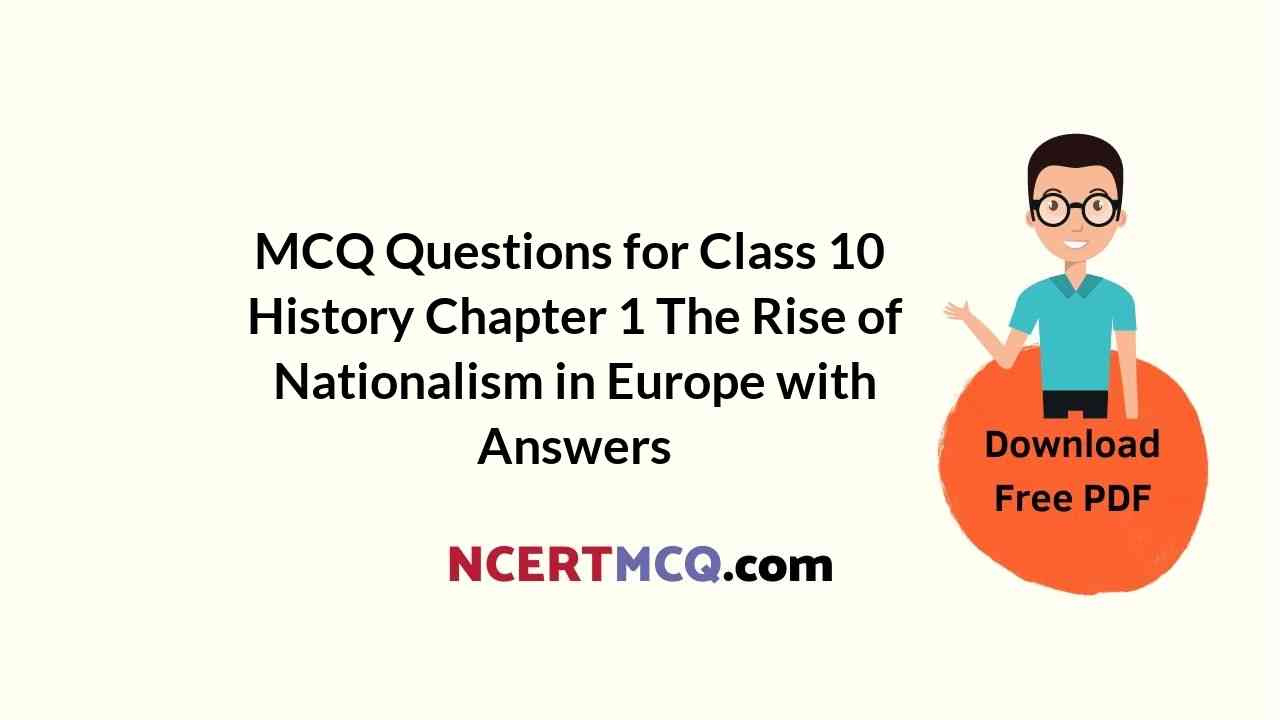
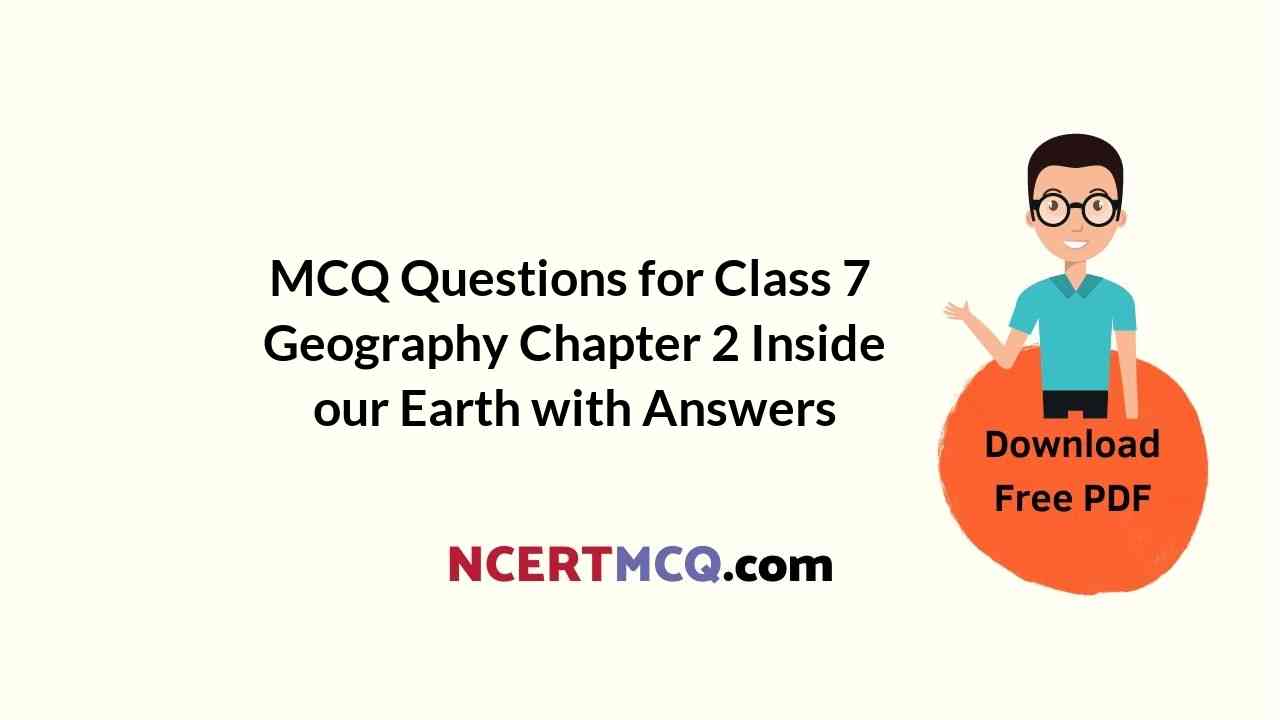
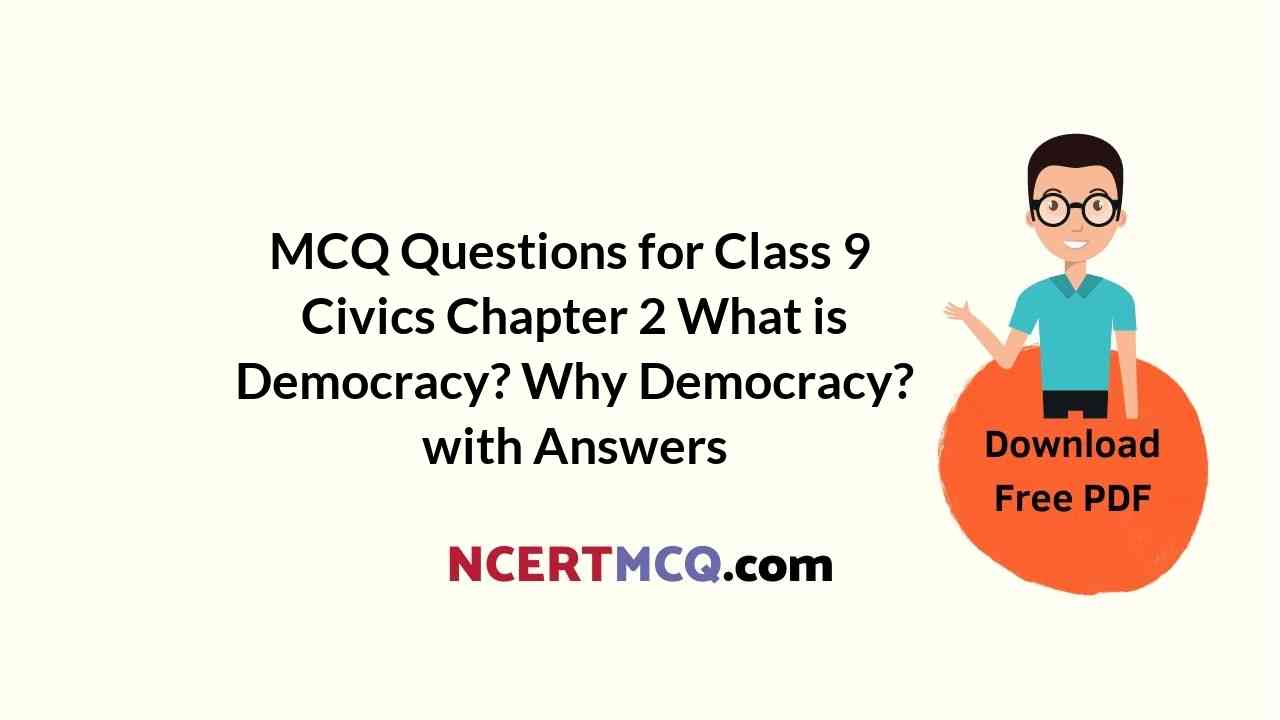

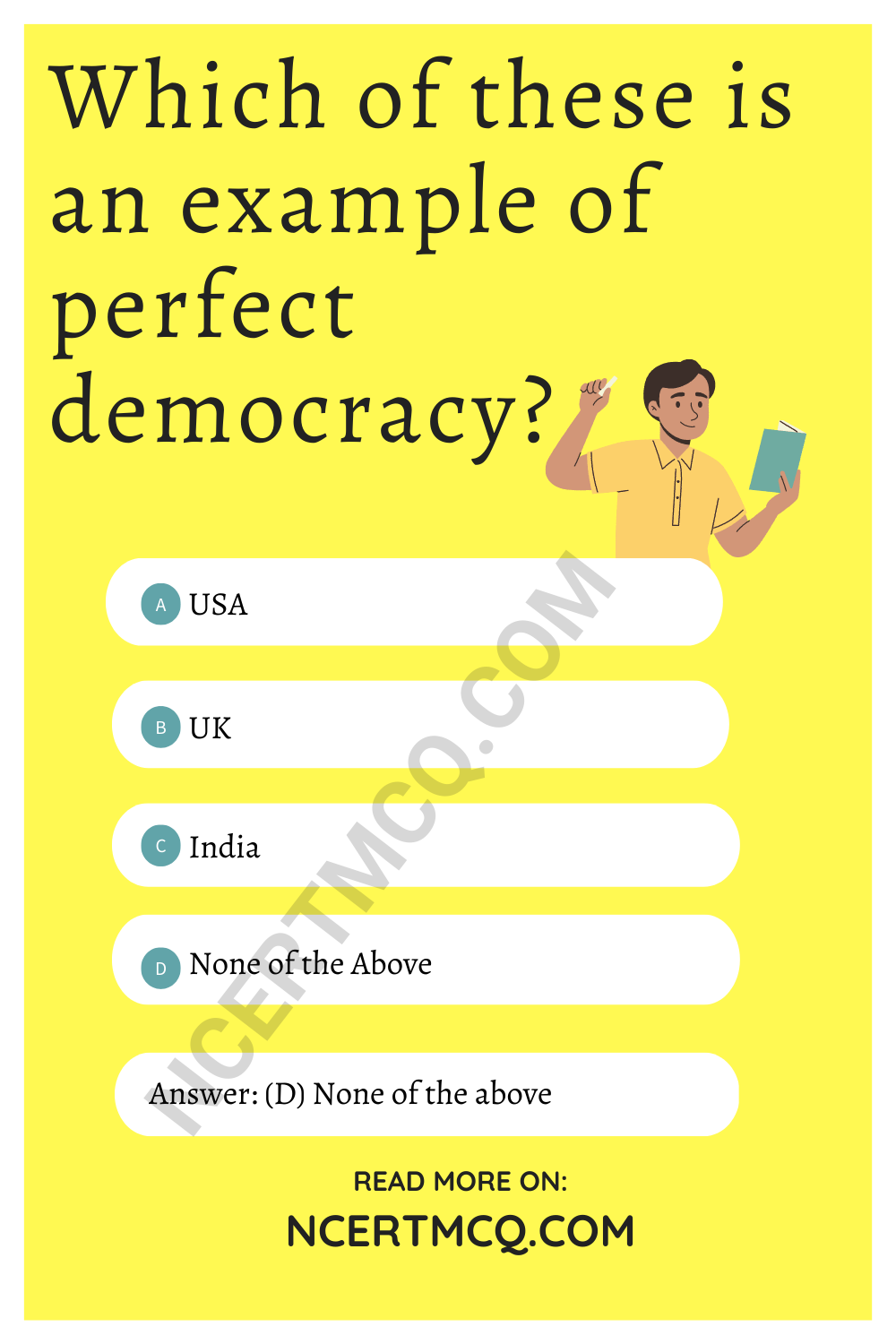
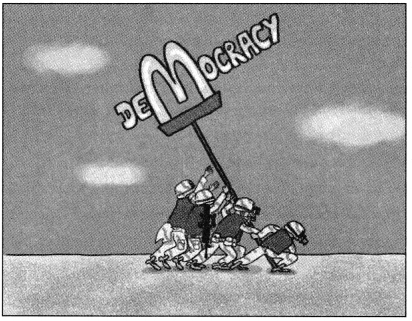
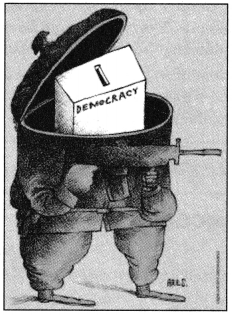
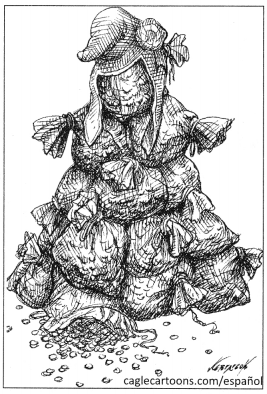
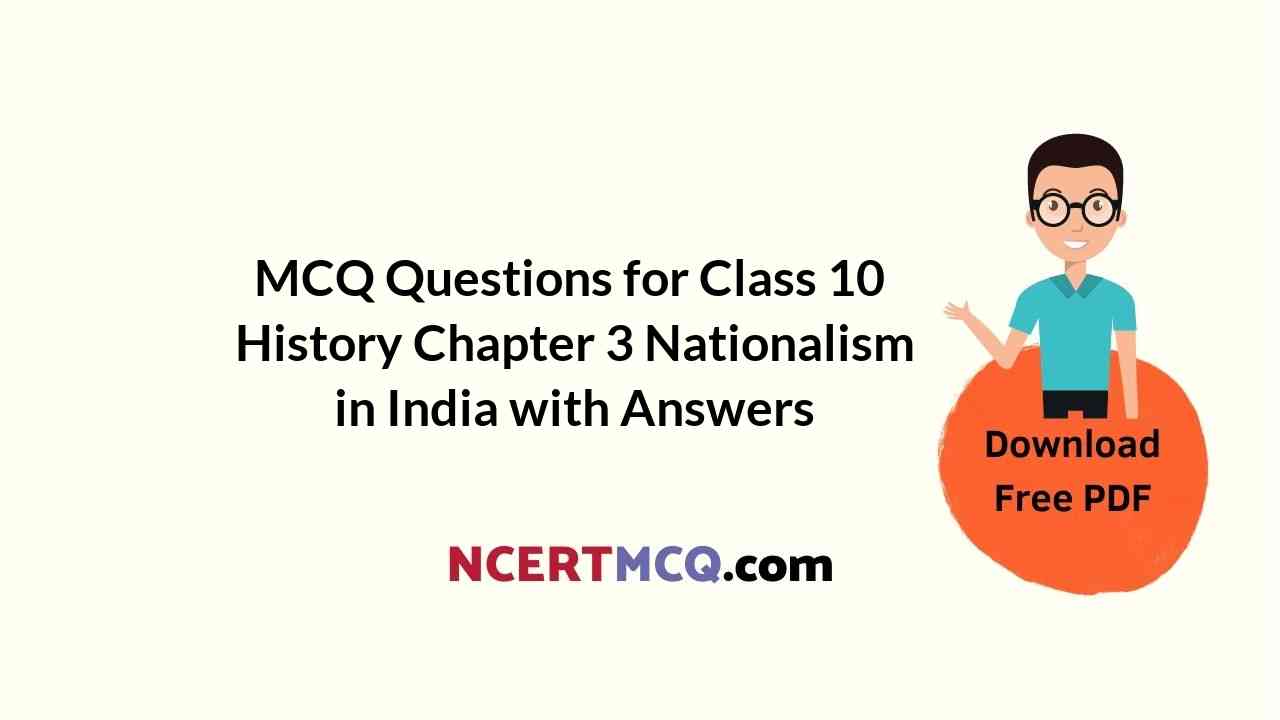
![In which of the following places did Mahatma Gandhi organize Satyagraha for the first time in India? [CBSE 2014]](https://ncertmcq.com/wp-content/uploads/2022/04/In-which-of-the-following-places-did-Mahatma-Gandhi-organize-Satyagraha-for-the-first-time-in-India-CBSE-2014.png)
